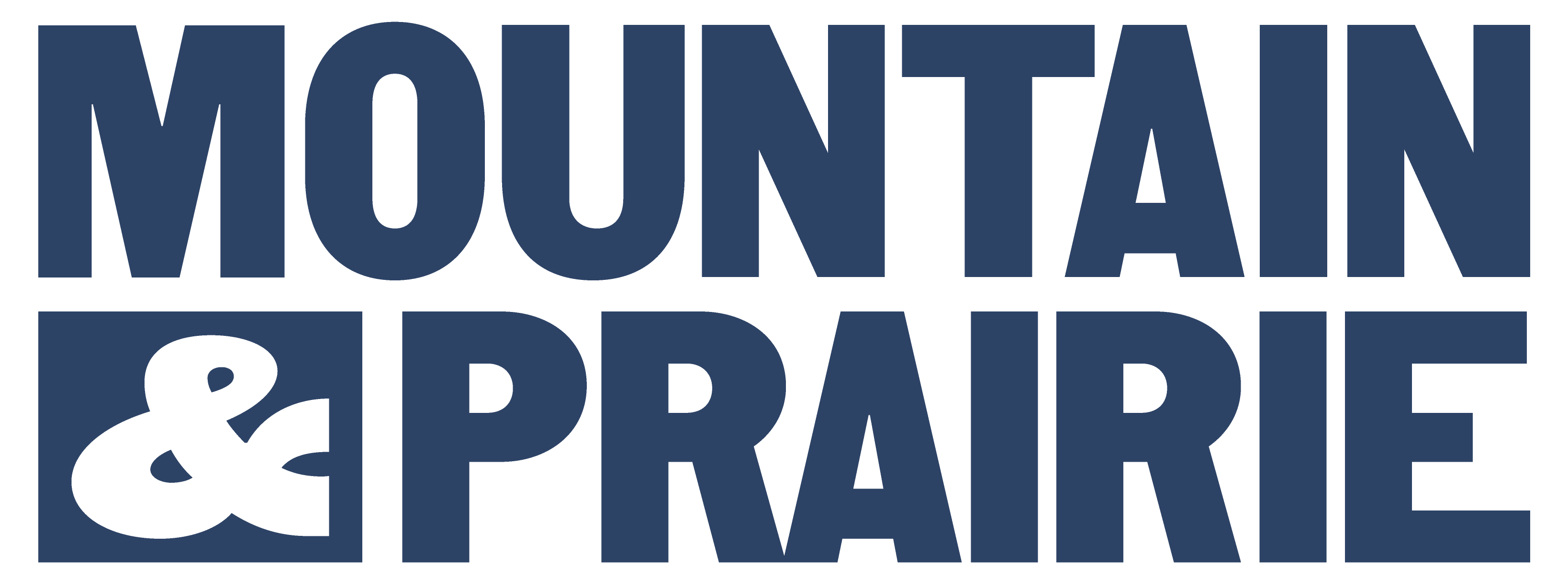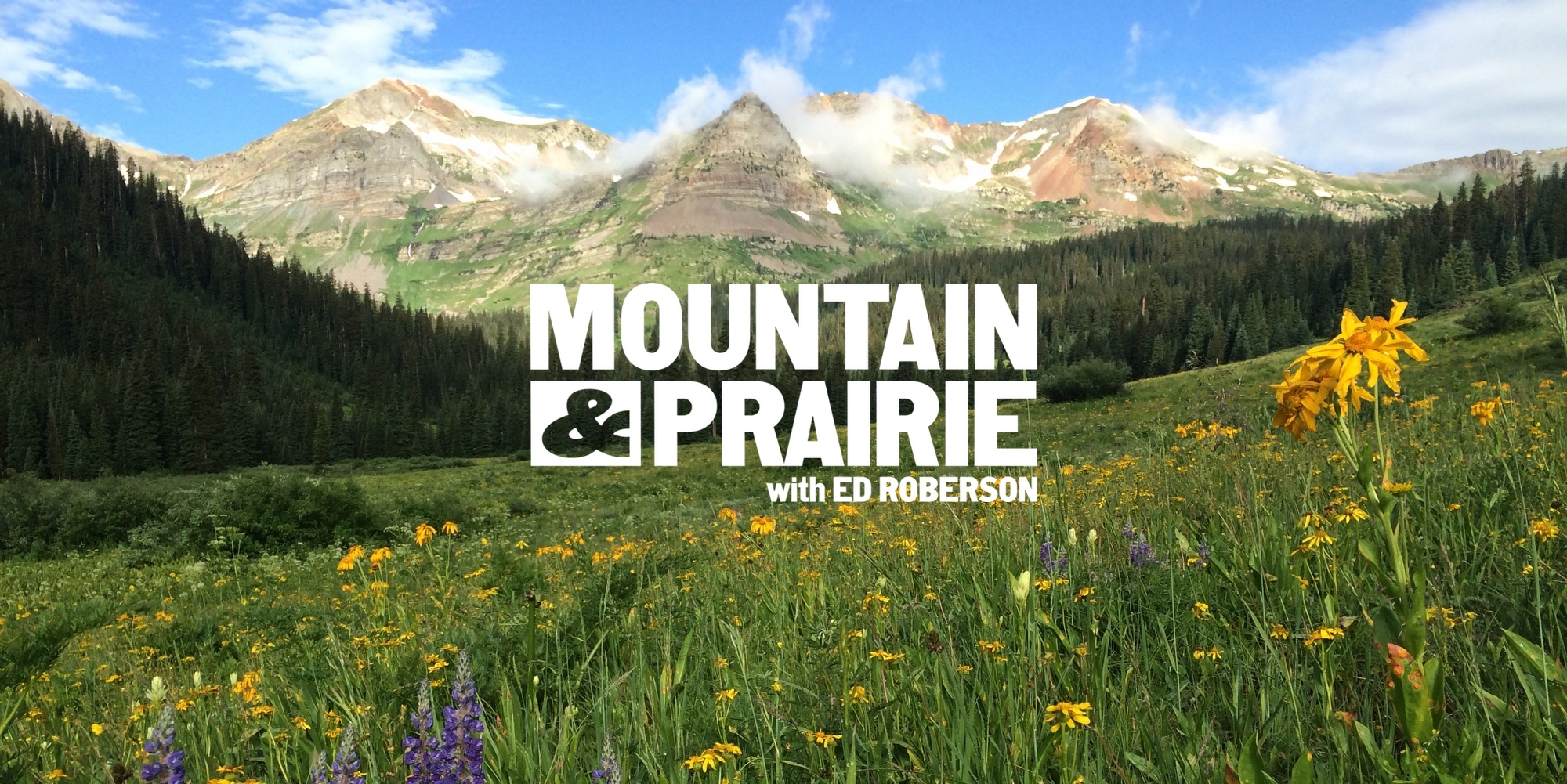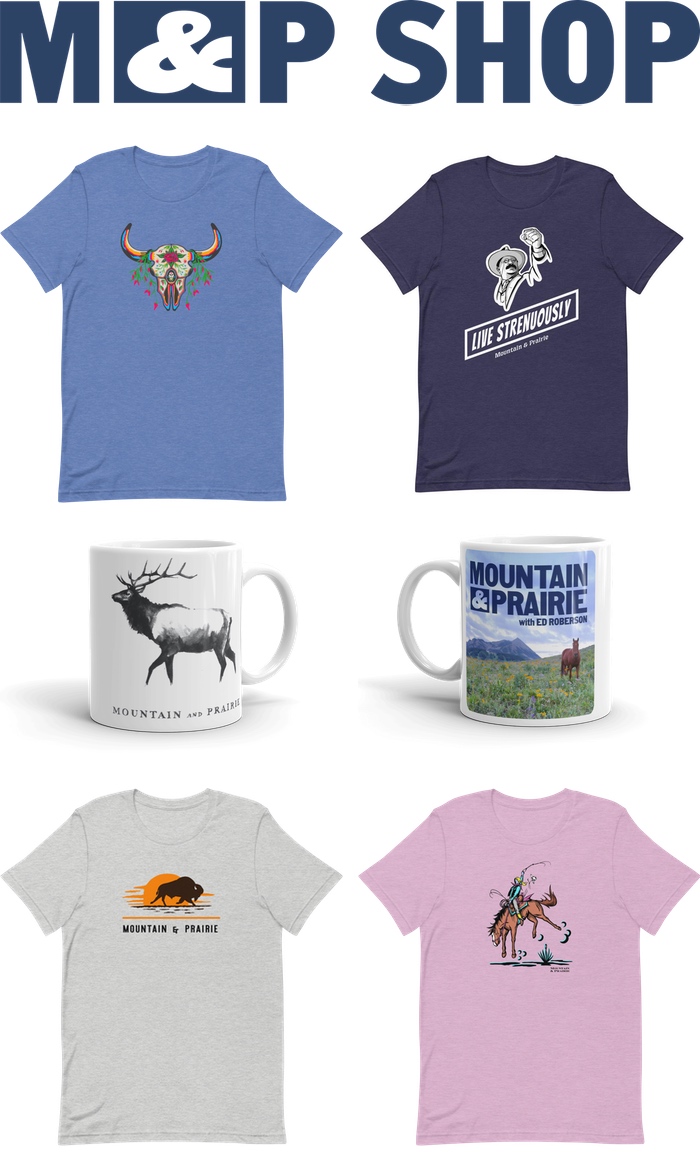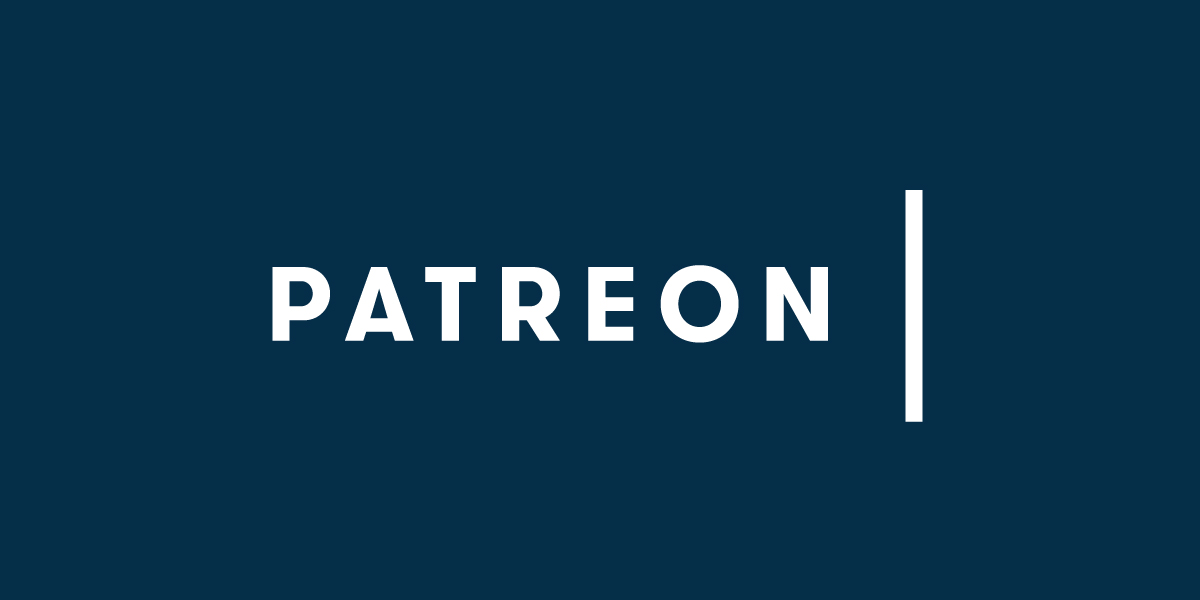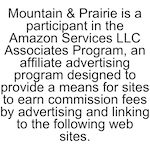Adam Foss – Lessons Learned From a Life Afield
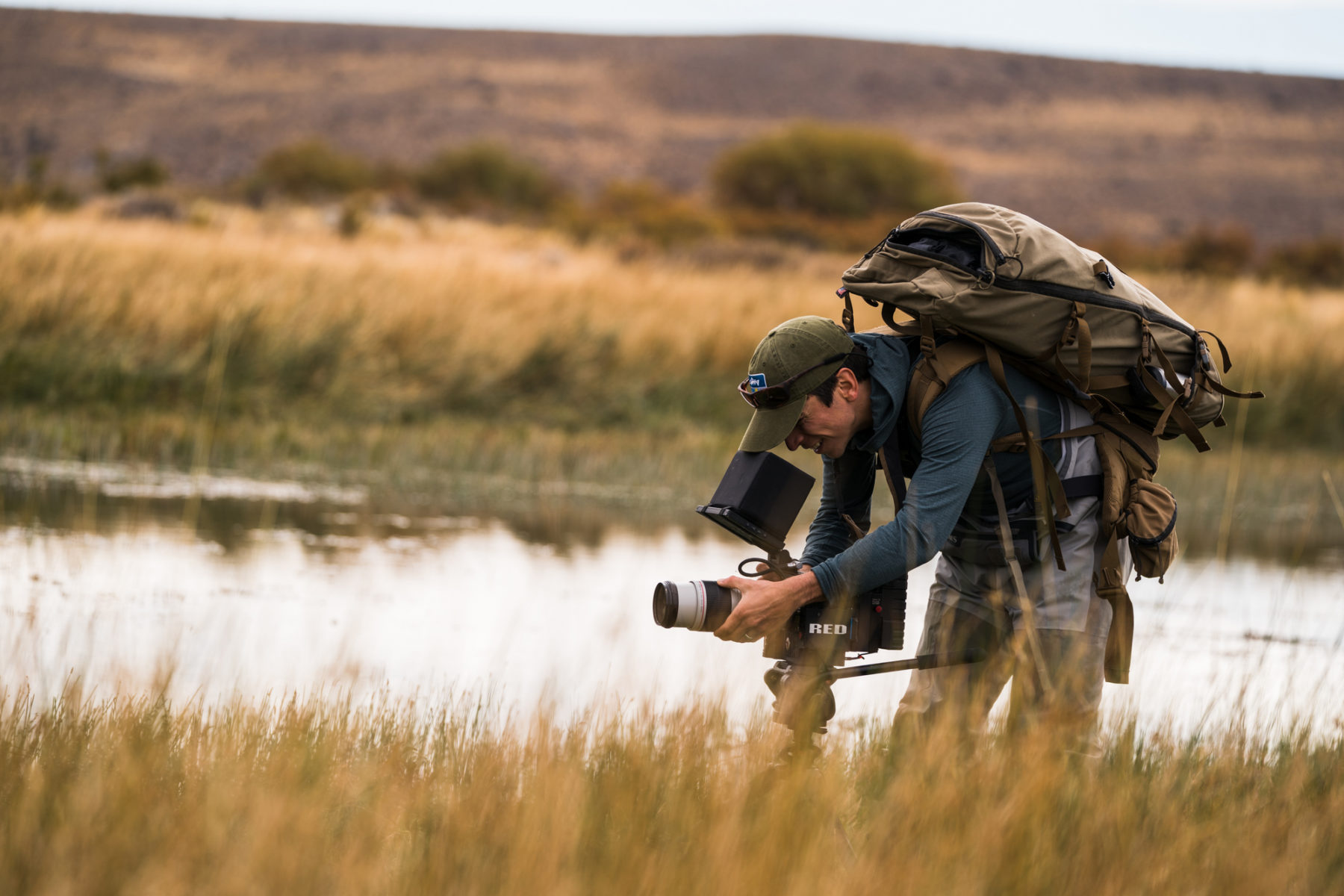
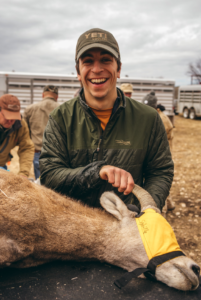
Adam Foss is a world-class hunter who has transformed his passion for wildlife and wild places into a rewarding career in filmmaking and photography. Adam has been obsessed with wilderness adventure for practically his entire life. At age 24, he was the youngest person to take all four species of North American sheep with a bow, an amazing achievement for a hunter of any age. But despite this accomplishment and others, Adam is much more focused on the process of the hunt—spending challenging days in the mountains, forming long-lasting friendships, stewarding public lands, and conserving legendary big game species.
Born in the Canadian Rockies, Adam spent much of his youth bow hunting with his father and older brother. As he grew older, his hunting trips expanded in geography and complexity, and he has now hunted many of the world’s wildest places for some of the most renowned big game. Adam initially considered a career in wildlife biology, but decided to go the creative route instead—he and his wife are now the owners of Foss Media, a company that creates films and photography for some of the most iconic outdoor brands today. As you’ll hear, Adam is passionate about wildlife, storytelling, and conservation, but he is equally humble, grounded, and grateful for being able to do what he loves on a daily basis.
We caught up over Skype, as Adam and his wife are currently traveling around Canada and the American West working on creative projects. We had a fun conversation and managed to cover a lot in just over an hour. We discussed Adam’s childhood in Canada and the lessons he learned from hunting with his father and brother. We chatted about how Adam values the process of hunting over the end goal of taking an animal and our shared theory that hunting taps into something primal in our human DNA. We talked in detail about conservation, specifically the role of public lands in both the United States and Canada. Adam also offered some wise advice to people who want to learn to hunt but may not have a long-standing connection to the sport. And as usual, we discussed Adam’s favorite books, films, and his most powerful outdoor experience.
This was such a fun conversation, and it’s clear that Adam has thought long and hard about these issues. I really enjoyed getting to know Adam, and I think you will too.
Photos courtesy of Adam Foss
Click Here to Download on iTunes
—
Click Here to Download on Google Play
—
Click Here to Download on Stitcher
—
Episode Notes
Topics Discussed:
7:15 – Adam’s upbringing in Canada
8:50 – Hunting with his dad in the mountains
10:45 – University in British Columbia and more far reaching hunts
12:30 – Adam’s early career goals
14:30 – Lessons learned from hunting with his father
17:45 – Breaking down hunts into manageable peices
20:45 – The mental game of hunting
23:00 – Process over goals
25:45 – Adam’s love of adventure and challenges
27:35 – Influences and mentors
33:15 – Adam’s current goals for a hunt
38:00 – South America trip
39:30 – Hunting as a part of human’s DNA
43:15 – Advice to new hunters
48:15 – Importance of public lands
52:15 – Thoughts on wolves and ecological balance
59:30 – Favorite books
1:02:55 – Favorite documentaries
1:05:20 – Most powerful outdoor experience
1:15:00 – Connect with Adam online
- Foss Media
- Adam on Instagram
- Wild Sheep Foundation
- Rocky Mountain Goat Alliance
- Andy Russell
- Life at Full Draw: The Chuck Adams Story by Gregg Gutschow
- Backcountry Bow Hunting by Cam Haynes
- Jack Frost
- Tom Hoffman
- Charles Post podcast
- Tyler Sharp podcast
- Modern Huntsman
- The Nature Fix by Florence Williams
- Horns in the High Country by Andy Russell
- The Alchemist by Paulo Coelho
- Death in the Long Grass by Peter Capstick
- Death in the Silent Places by Peter Capstick
- Tim Ferriss
- Tim Ferriss Podcast
Chris Eyer – Montana’s Mindful Mule Packer

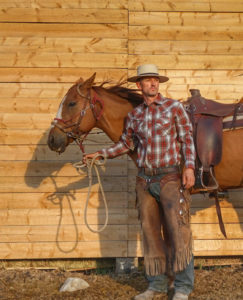
Chris Eyer is a true Western polymath. He is probably best known for his work as a mule packer, in which he uses mules to transport supplies into some of Montana’s most remote wilderness areas—he documents the adventures on his extremely popular Instagram account @muledragger. But as you’ll hear in our conversation, mule packing only scratches the surface—Chris is an experienced mountaineer and climber, a former US Marine, a practicing Buddhist, a leather craftsman, and a successful electrical contractor. From his home base in Montana’s Bitterroot Valley, Chris leads a full and fascinating life, working hard and enjoying his connection to the natural world and his animals.
Chris was raised in California, and from an early age was attracted to the outdoors and adventures in wild places. On a backpacking trip during his teens, he came across a team of mules and was immediately entranced—from that moment on, he knew that he wanted to work as a mule packer. As an adult, Chris taught himself the ins and outs of mule packing, a hard-knocks method of learning that’s not for the faint of heart. But through this long and tough self-education, he established incredibly deep relationships with all of his animals– relationships that have significantly enriched his life in many ways.
As you’d expect from someone with Chris’s diverse set of experiences, we had an extremely wide-ranging conversation. We chat about how he became a mule packer and some of the crazy and scary experiences early in his career. We cover his time in the Marines, and the lessons he learned that carry over into his daily life now. We also discuss his connection to Buddhism and his meditation practice, and how his mindful approach to life and wilderness travel keeps him and his team of animals safe in dangerous situations. Chris also explains the specifics of mules from a biological and temperamental perspective. We discuss Chris’s unique connection to legendary alpinist Conrad Anker, as well as the similarities between packing and climbing. As usual, we hit upon books, films, favorite places in the West, and much more.
There’s a ton of amazing information in this episode, so be sure the check out the episode notes. Hopefully I’ll get Chris back for a part two, because there’s still plenty to discuss. Enjoy!
Photos courtesy of Chris Eyer
Click Here to Download on iTunes
—
Click Here to Download on Google Play
—
Click Here to Download on Stitcher
—
Episode Notes
Topics Discussed:
Sarah Calhoun – Community Building Through Commerce
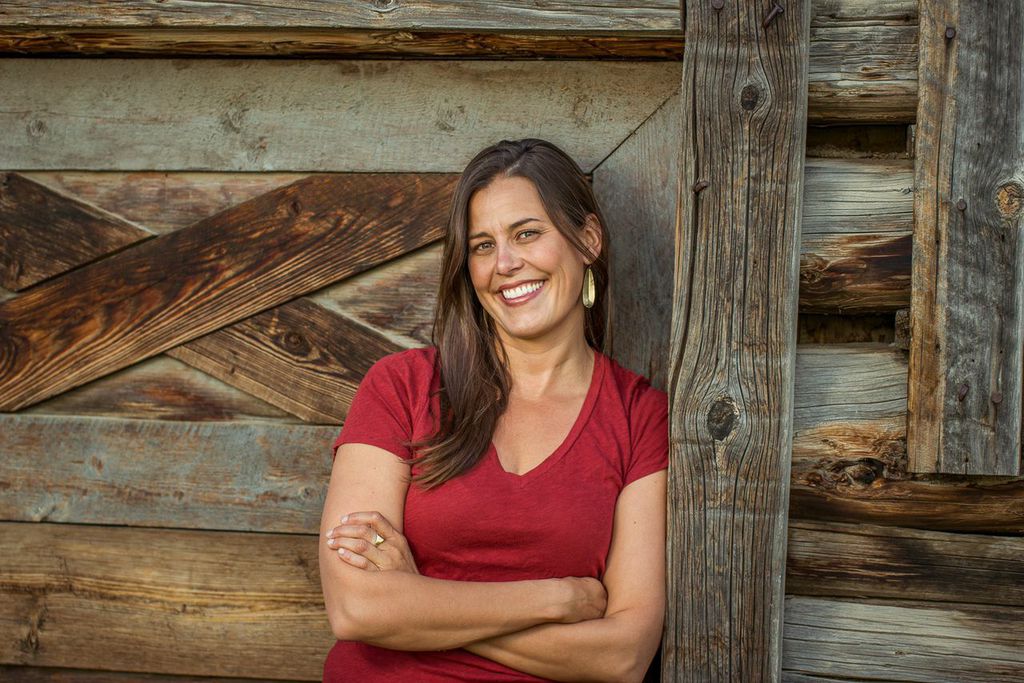
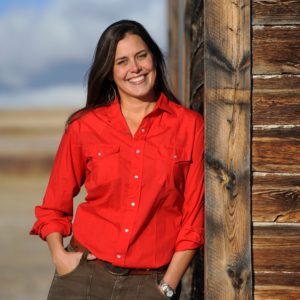
Sarah Calhoun is the founder and owner of Red Ants Pants, a Montana-based apparel company that makes high-quality, American-made workwear for women. But Sarah’s business ventures are just the tip of the iceberg—she also started the Red Ants Pants Music Festival, which attracts world-class musicians like Dwight Yoakam and Lucinda Williams. The proceeds from the music festival support Sarah’s third venture, the Red Ants Pants Foundation, an organization dedicated to developing women’s leadership, supporting local farms and ranches, and enriching communities. It’s simply amazing that one person can do this much work!
Sarah was raised on a farm in New England, and spent her early career working as an instructor for Outward Bound. After reading Ivan Doig’s This House of Sky, she packed up and moved to Montana, where she began to turn her idea for Red Ants Pants into a reality. She learned to sew, taught herself the basics of the apparel business, and eventually moved to the small agricultural community of White Sulphur Springs, where Red Ants Pants opened for business. As you’ll hear, selling pants is just one aspect of Sarah’s larger vision—she’s using her company to build community, empower women, and bring together people of differing perspectives and backgrounds.
We had a very interesting conversation, and you’ll be blown away by Sarah’s focus, vision, and the staggering amount she has been able to accomplish. She talks about growing up in New England, and how her family helped to instill her relentless work ethic. She discusses her time teaching at Outward Bound, and how many of the lessons learned in that role have translated to her business. We chat about how the Red Ants Pants business model flies in the face of traditional MBA theories, and how her lack of business experience was actually a strength when starting the company. We also talk about how hard work in the outdoors builds self-confidence, as well as her future plans for the foundation. And as usual, we discuss impactful books, films, and the best advice she’s ever received.
This is a great episode, and I know you’ll enjoy it. There’s a lot here, so be sure to check the episode notes for links to all that we discuss. Enjoy!
Photos courtesy of Red Ants Pants
Click Here to Download on iTunes
—
Click Here to Download on Google Play
—
Click Here to Download on Stitcher
—
Episode Notes
Topics Discussed:
3:55 – Sarah’s personal and professional background
6:00 – Approaching outdoor companies with the idea for Red Ants Pants
6:55 – Moving to White Sulphur Springs
8:40 – The influence of Ivan Doig’s writing
9:45 – Joining the community of White Sulphur Springs
12:00 – Importance of community for Sarah
13:10 – Sarah’s childhood career aspirations
14:20 – Outward Bound
18:00 – Laying the foundation for Red Ants Pants
20:45 – History of Sarah’s work ethic
22:00 – Weathering the financial crisis
25:10 – Sarah’s daily routines
27:45 – Lessons learned over the years
29:35 – Working to expand her comfort zone
31:20 – Red Ants Pants Music Festival
37:20 – Red Ants Pants Foundation
39:30 – Value of hard work in the outdoors
42:55 – Foundation success stories
45:45 – Future plans for the foundation
47:00 – Heroes and mentors
49:50 – Advantages of little business experience
51:00 – Favorite books
53:30 – Favorite films
54:35 – Hobbies
55:20 – Favorite international travel spots
56:00 – Most powerful outdoor experience
58:00 – Favorite location in the West
58:45 – Best advice ever received
59:50 – Request of the listeners
1:00:40 – Story of the name “Red Ants Pants”
1:01:00 – Connect with Sarah online
- Sarah Calhoun
- Red Ants Pants
- Red Ants Pants Music Festival
- Red Ants Pants Foundation
- White Sulphur Springs, MT
- Ivan Doig
- This House of Sky by Ivan Doig
- Sarah King podcast episode
- Tribe by Sebastian Junger
- Blind Your Ponies by Stanley Gordon West
- Edward Abbey
- Wallace Stegner
- Ernest Hemingway
- Prodigal Summer by Barbara Kingsolver
- Wind River
Becca Skinner – Pursuing Her Passions in the West

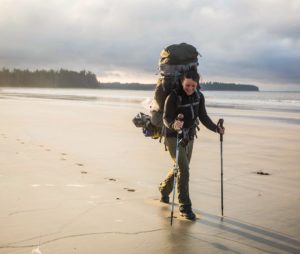
Becca Skinner is a Bozeman-based photographer, writer, and adventurer whose work has taken her to some of the farthest corners of the globe. Growing up between Colorado and Wyoming, Becca was raised by adventurous and supportive parents who nurtured her love of the outdoors and her artistic endeavors. As a young woman, Becca’s genuine interest in social work and helping the less fortunate led to her winning grants to photograph post-Katrina New Orleans and post-tsunami Sumatra. Those experiences, and the body of work they produced, allowed Becca to pursue her passion of photography full time, and her career continues to grow and evolve in exciting ways.
As you’ll hear, Becca has been willing to be single-mindedly focused and take calculated risks to “make it” as a professional photographer. When she did not win a National Geographic Young Explorers Grant the first time she applied, she dusted herself off, re-focused her efforts, and was successful on her second try. After saving enough money, she struck out alone on a 32,000-mile road trip through the American West, living in her car, honing her craft, and continuing to build her portfolio. She has devised methods for staying positive in immensely uncomfortable situations, such as a cold, wet expedition in Vancouver’s coastal backcountry, which we discuss in detail. Despite her success, Becca remains humble and down to earth, and we had a very fun conversation.
We covered a wide range of subjects– we discussed her childhood in the West and how her family played such a formative role in shaping her career and life. We chatted about her experiences in New Orleans and Sumatra, and how the disaster victims’ attitudes toward the catastrophes varied so widely. We discussed her first road trip throughout the West and how she handled being alone for such long stretches. We also talked about the importance of having solid expedition teammates and the challenges of integrating back into day-to-day life after an intense trip. And of course, we covered favorite books, films, and the best advice she’s ever received.
If you don’t already, be sure to follow Becca on Instagram and other social media. Links to everything are in the episode notes. Enjoy!
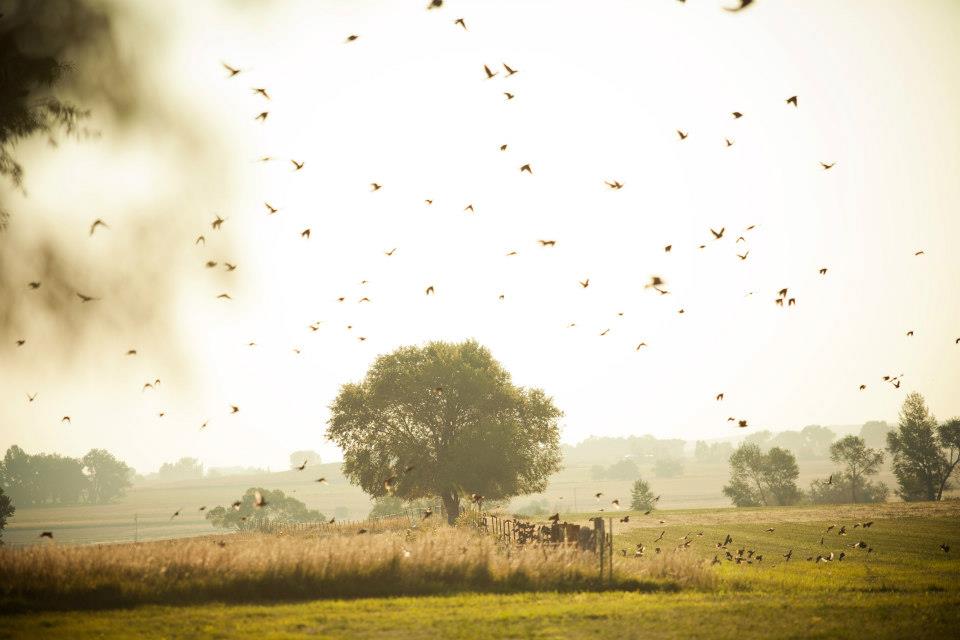
Header photo courtesy of Becca Skinner
Click Here to Download on iTunes
—
Click Here to Download on Google Play
—
Click Here to Download on Stitcher
—
Episode Notes
Topics Discussed:
- Becca Skinner
- Becca on Instagram and Facebook
- Nat Geo Young Explorers Grant
- Becca’s Panama kayak adventure
- Becca’s Nat Geo speech
- Lander, WY
- Muddy Gap, WY
- NOLS
- Joe Riis
- Jim Balog – Extreme Ice
- Todd Skinner
- Playa Grande, Costa Rica
- Jimmy Chin
- Brendan Leonard interview
- Claire Fieseler
- Being Here film
- Hilary Oliver
- The New American Road Trip Mixtape by Brendan Leonard
- Short Nights of the Shadow Catcher by Timothy Egan
- Cougar Annie’s Garden by Margaret Horsfield
- Unbranded
- Planet Earth
- The River and the Wall
- Cory Richards
Brendan Leonard – Grinding It Out
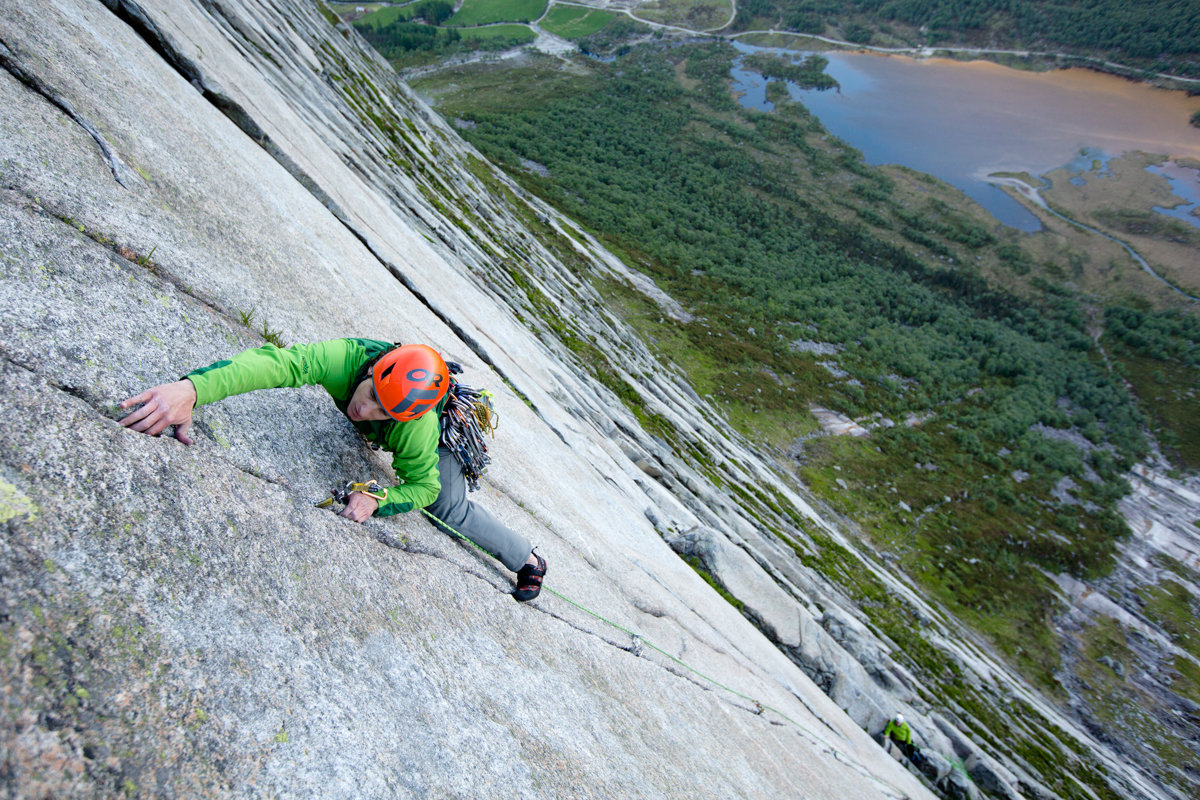
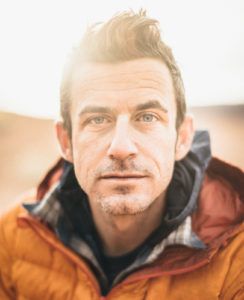
Brendan Leonard is a writer and creative whose stories about adventure in wild places have built him a loyal following in the outdoor world and beyond. Whether it’s writing for his blog Semi-Rad, authoring eight books, or making films such as his recent How to Run 100 Miles Brendan combines humor, introspection, and skilled storytelling in an authentic way that strikes a chord with a wide range of audiences. But as you’ll hear, Brendan’s secret ingredient to success in his creative pursuits is his ability to consistently focus in and grind out the hard work, week after week, year after year.
Brendan is an Iowa native who moved West to attend journalism school at the University of Montana. After struggling with alcohol addiction in his youth, the West’s wide-open spaces brought Brendan a much-needed change of scenery and the opportunity for a fresh start. What started as short hikes around Missoula transformed into an all-in obsession with rock climbing that eventually led to writing gigs with Outside, Men’s Journal, Alpinist, and other well-known publications. Brendan is a shining example of how persistence, hard work, and a willingness to bet on yourself can lead to a fulfilling life and career doing what you love.
We had a wide-ranging, fun, and hilarious conversation about his life and career, and we also managed to wander into a few completely unexpected topics. We chatted about Brendan’s “all-or-nothing” personality, and the challenges and rewards associated with being wired that way. We discussed his ability to focus on the process rather than the goal, and how that approach is beneficial when creating or pursuing an outdoor objective. We obviously talked about climbing, but also discussed ultramarathons, specifically his recent experience running a 103-mile race through the Colorado mountains. And as you’ve come to expect, we covered favorite books, films, and a long list of other interesting topics.
This interview was so much fun, and I really appreciate Brendan having me over to chat. I highly recommend his books 60 Meters to Anywhere and Make It Till You Make It, so be sure to check those out.. Also, watch his film “How To Run 100 Miles”– I’ve watched a ton of ultrarunning films, and this one is my favorite. Check the episode notes for links to all of this and more. Hope you enjoy!
Header photo by Forest Woodward, headshot courtesy of Brendan Leonard
Click Here to Download on iTunes
—
Click Here to Download on Google Play
—
Click Here to Download on Stitcher
—
Episode Notes
Topics Discussed:
4:00 – Growing up in Iowa
4:55 – Writing for the college newspaper
6:00 – Applying to journalism schools
7:45 – Falling in love with the outdoors in Montana
10:10 – Discovering rock climbing
12:00 – Deep thoughts on booze
15:35 – Soakers and non-soakers
18:30 – Lessons learned from endurance adventures
21:00 – Importance of process over goals
23:40 – The reality of the creative life
24:40 – Story of Semi-Rad
29:00 – The need for a grinding mentality
32:00 – Strategies for the new media landscape
33:10 – Brendan’s creative hustle
35:30 – Focusing on the art versus the bottomline
36:30 – Today’s work ethic versus five years ago
38:00 – Brendan’s daily routine
40:00 – Creating illustrations
41:35 – Other creatives that inspire Brendan
44:15 – Film inspiration
47:00 – Revisiting old work
49:00 – Dealing with reviews and online feedback
53:00 – Managing social media
55:15 – Importance of public lands and conservation
1:03:00 – Favorite books about the West
1:09:00 – Favorite films
1:12:45 – Surprising activities
1:14:30 – Most powerful outdoor experience
1:18:50 – Favorite location in the West
1:22:00 – Best piece of advice ever recieved
1:27:00 – Request of the listeners
1:29:15 – Connect with Brendan online
- Brendan Leonard
- Semi-Rad
- Semi-Rad on Facebook, Instagram, and Twitter
- 60 Meters to Anywhere by Brendan Leonard
- Make It Till You Make It by Brendan Leonard
- Brendan’s Amazon author page
- How to Run 100 Miles
- Hilary Oliver
- How to Become Great at Just About Anything podcast
- The Emerald Mile by Kevin Fedarko
- Lionel Richie cartoon
- Dark Side of the Lens
- Fitz Cahall
- Dirtbag Diaries
- 35
- A Heartbreaking Work of Staggering Genius by Dave Eggars
- The Nature Fix by Florence Williams
- Barbarian Days by William Finnegan
- The Secret Knowledge of Water by Craig Childs
- Craig Childs
- Angle of Repose by Wallace Stegner
- The Dog Stars by Peter Heller
- Kook by Peter Heller
- Hell of High Water by Peter Heller
- Dog Stars by Peter Heller
- The Painter by Peter Heller
- A Brief History of Seven Killings by Marlon James
- Do the Right Thing
- Mistaken for Strangers
- Jillian Lukiwski interview
- Jocko Willink
Jason Rich – The Humility and Hard Work of Creativity

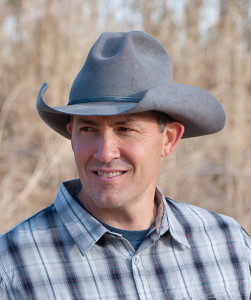
Jason Rich is a Utah-based artist whose extraordinary paintings of life in the American West have made him one of the most popular and respected working artists today. Throughout his 20-year career, Jason has won countless awards and is represented by some of the most prestigious galleries in the West. But what is more telling is the respect and admiration he has earned from many of his cowboy artist contemporaries– as you’ll hear, Jason is amazingly humble, gracious, and grateful for his career in professional art.
Growing up in Idaho, art has been a central part of Jason’s life for as long as he can remember. He was formally educated as an artist, and immediately after graduate school, he committed himself fully to painting professionally. Thanks to his focus, work ethic, and the support of his wife, Jason was able to carve out a niche for himself in the competitive world of Western art. Two decades later, Jason’s popularity continues to grow, which is partly a product of his constant drive to push outside his comfort zone and mature as an artist.
Jason and I had a fun conversation, and we dug into the many aspects of his life as an artist, family man, and admirer of the American West. We discussed his upbringing in Idaho, and how he developed the confidence and skills to go directly from grad school to professional art. We chatted about his techniques for challenging himself as an artist and how his work has evolved over the last two decades. We also talked about his association with the prestigious Cowboy Artists of America, and how spending time with other talented artists has influenced his work. We covered mentors, favorite books, favorite artists, and much more, so be sure to check out the episode notes for a complete list of everything discussed.
Thanks again to Jason for taking the time to chat. Hope you enjoy!
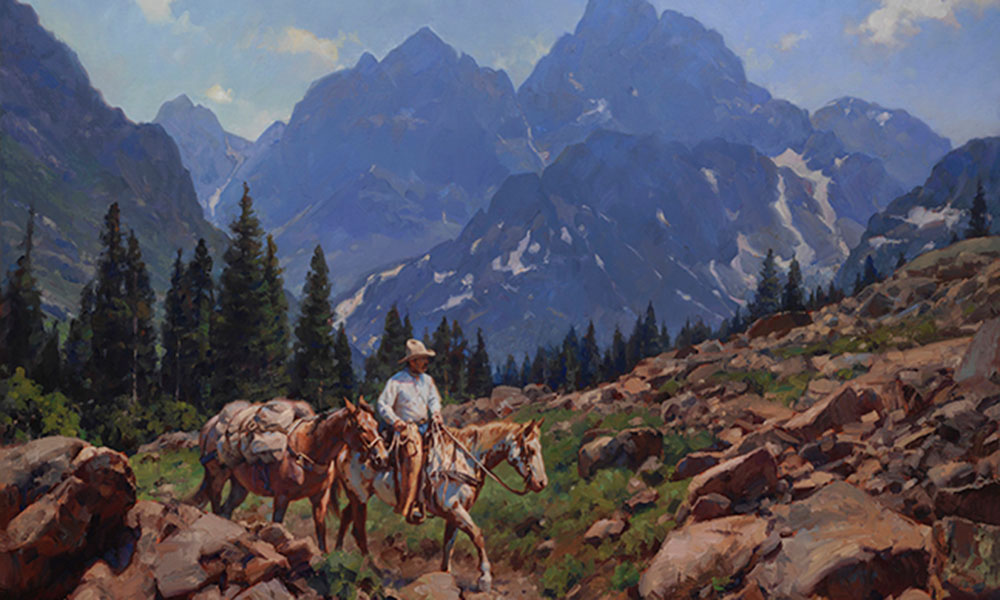 All images courtesy of Jason Rich
All images courtesy of Jason Rich
Click Here to Download on iTunes
—
Click Here to Download on Google Play
—
Click Here to Download on Stitcher
—
Episode Notes
Topics Discussed:
3:35 – How Jason describes his art
4:50 – Jason’s childhood
5:40 – Family history in the West
7:00 – Early memories of art
9:30 – Education in art education
10:30 – Decision to pursue art full time
11:00 – Graduate school
12:00 – Transition to professional artist
14:30 – What gave Jason the confidence to pursue art
17:00 – When did Jason know he had “made it” as an artist
21:30 – Jason’s daily routine
25:00 – Jason’s need to push himself artistically
28:55 – Artists that have influenced Jason’s work
31:40 – Humbleness + Discontent
32:20 – Cowboy Artists of America
34:25 – Ensuring historical accuracy
37:40 – Unchanged nature of ranching through the ages
38:10 – Changes in Jason’s art over the last 15 years
42:40 – Approaching art as a business
46:50 – Advice to his younger year old self
49:15 – Favorite books
50:50 – Favorite films
52:45 – Other hobbies
54:55 – Most powerful outdoor experience
56:20 – Favorite place in the West
57:40 – Best advice ever received
58:30 – Request of the listeners
59:45 – Connect with Jason online
- Jason Rich Studios
- Jason on Facebook and Instagram
- Glen Edwards
- Dean Cornwell
- Pruett Carter
- Saul Tepper
- Walter Everette
- Harvey Dunn
- Howard Pyle
- Andrew Loomis
- Norman Rockwell
- Teal Blake podcast interview
- Cowboy Artists of America
- Jim Norton
- The Art of Dean Cornwell
- Loius L’Amore
- Max Brand
- The Cowboys
- Big Jake
- The Greatest Showman
- The Naturalist by Darrin Lunde
- Gordon B Hinckley
Jim Howell, Part II – Restoring Ecological Capital Through Grazing

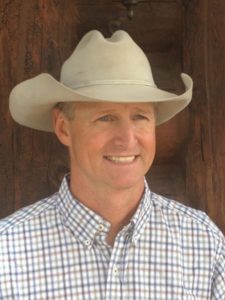
Longtime listeners of the podcast will definitely remember my first interview with Jim Howell—he is a rancher and CEO of Grasslands LLC, a progressive ranch management company with operations in the American West, Florida, and New Zealand. Jim was also a co-founder of the Savory Institute, a non-profit organization that espouses the use of holistic planned grazing to restore healthy grasslands around the world. Having worked close to the land his entire career, Jim has a fascinating personal and professional backstory, so I encourage you to listen to our first episode, if you haven’t already.
Knowing that many Mountain & Prairie podcast listeners either work in ranching or are interested in holistic ranch management, Jim and I decided to have a second conversation focused on more of the nitty gritty details of his process for managing ranches. We discuss a wide range of topics, from how Jim and his investors identify ranches as potential acquisitions to their methods for increasing stocking rates while simultaneously improving the health of the grass. We discuss the intense, focused planning that goes into each operation, and Jim explains how his grazing process translates into increased biodiversity and improved ecological health of the entire landscape. This conversation is like a college class in ranch management, only much more fun and engaging.
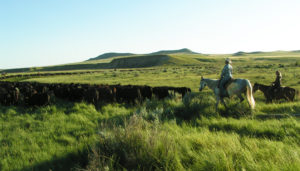
Our conversation revolves around two of Grasslands’ eastern Montana ranches—the 53,000+/- acre Antelope Springs Ranch and the 38,000+/- acre Cinch Buckle Ranch. My Mirr Ranch Group colleague Duffy Brown and I are working with Jim to market both of these ranches, so we’re familiar with the operations and landscapes and understand the amazing results that Jim and his team have been able to achieve. Both ranches serve as excellent case studies of how holistic management can bolster the health of the grass, increase profitability, and be a true winning proposition for the land, animals, and all other stakeholders.
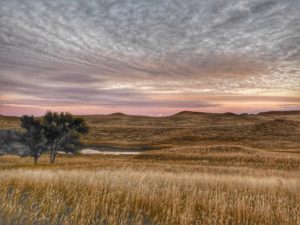
Even if you don’t have a specific interest in ranches or grasslands, you’ll still get a lot out of this episode. Jim has very wise answers to some of the quick questions that I didn’t ask during our first interview, and he offers plenty of great book recommendations, including one book that Jim thinks every college freshman should read. The episode is packed with great information, so don’t forget to check the episode notes. Jim is a hardworking, curious, humble, and smart guy who has managed to create a fulfilling career that’s making the world a better place, so I know you’ll enjoy the conversation.
All photos courtesy of Jim Howell & Grasslands LLC
Click Here to Download on iTunes
—
Click Here to Download on Google Play
—
Click Here to Download on Stitcher
—
Episode Notes
Topics Discussed:
- Jim Howell – first podcast interview
- Jim on Instagram
- Grasslands LLC
- Savory Institute
- Daniella Ibarra-Howell
- For the Love of Land: Global Case Studies of Grazing in Nature’s Image by Jim Howell
- Antelope Springs Ranch
- Cinch Buckle Ranch
- Allan Savory
- Cattle Kingdom by Christopher Knowlton
- The Rise of Theodore Roosevelt by Edmund Morris
- Bad Land by Jonathan Raban
- PastureMap
- Christine Su Podcast Interview
- Cattle Ranches for Investment-Minded Buyers by Ed Roberson
- How to Not Go Broke Ranching by Walt Davis
- Holistic Management by Allan Savory
- No Risk Ranching: Custom Grazing on Leased Land by Greg Judy
- American Serengeti by Dan Flores
- Dan Flores Podcast interview
- Guns, Germs, and Steel by Jared Diamond
Brian Calvert – In-Depth Journalism in the New West
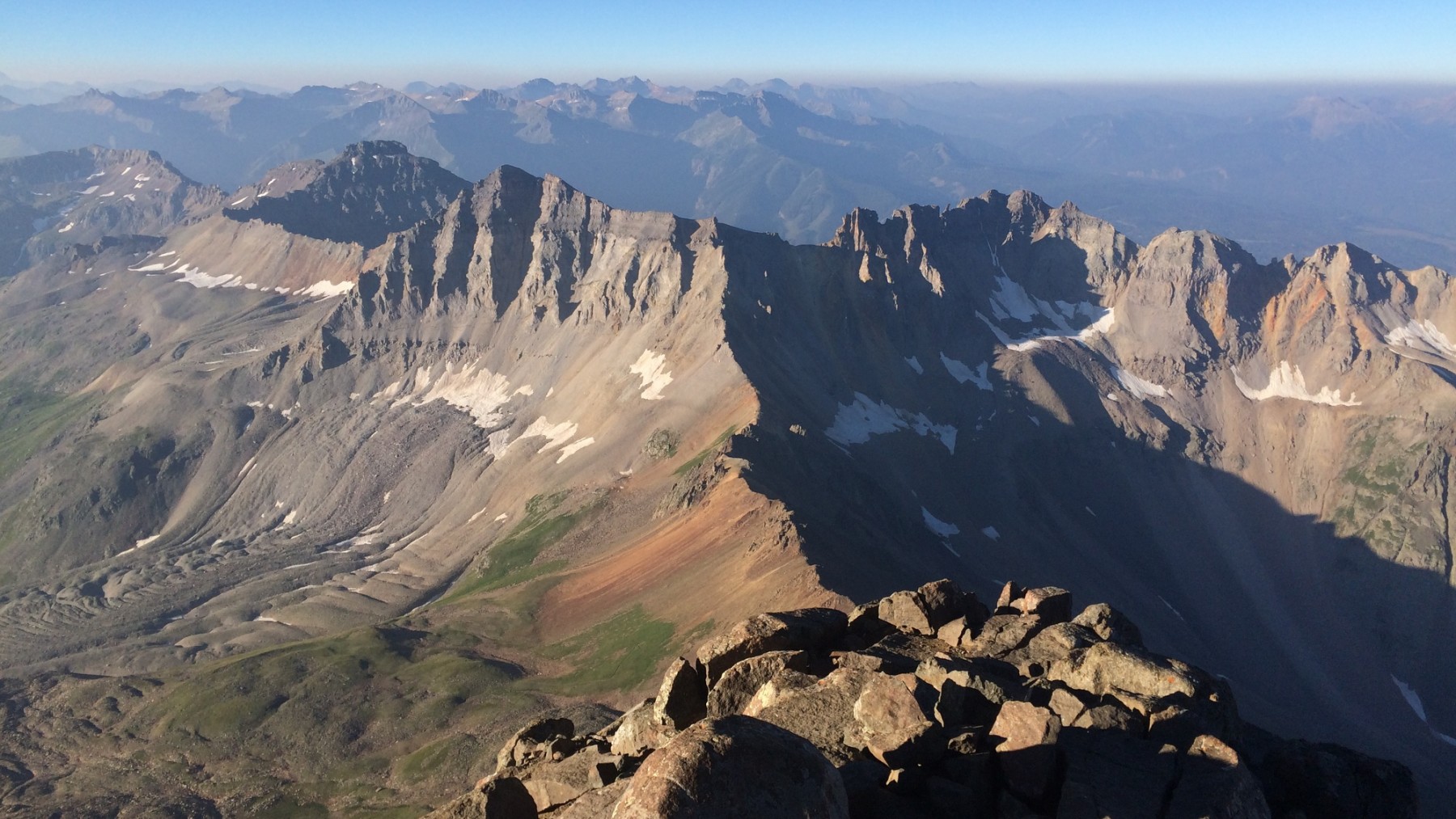
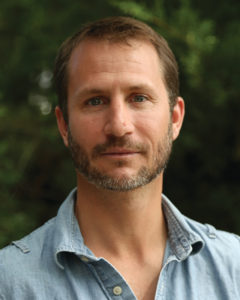
Brian Calvert is the Editor-in-Chief of the High Country News, a non-profit media organization that covers the defining stories of the American West. Since 1970, High Country News has been fully committed to in-depth journalism that explores complex relationships between the West’s communities, business interests, and the natural world. In our current media climate that seems to celebrate surface-level, hastily written news stories, High Country News remains committed to long-form, well-researched, and nuanced explorations of complicated issues.
Brian is a fourth-generation Wyoming native who grew up in Pinedale at the base of the spectacular Wind River Range. A blue-collar upbringing, a stint in the Army, time working in the oil fields, and years spent overseas as a foreign correspondent have given Brian a unique and valuable perspective into the relationship between people and place. This depth of experience allows Brian to approach Western issues with a curious, patient, and balanced style that is becoming more and more rare in today’s media.
I was on Colorado’s Western Slope for work and stopped by the High Country News office in Paonia to chat with Brian. We had a fascinating conversation about the history of High Country News and how its commitment to in-depth journalism is more important now than ever. We discussed Brian’s upbringing in Wyoming, and why he chose to pursue journalism as a career. We talked about his time spent as a foreign correspondent in places like Cambodia, China, and Afghanistan, as well as the lessons he learned from living in such intense and sometimes dangerous environments. And as you’ve come to expect, we discussed his favorite books, authors, and places in the American West.
There’s a lot to learn in this episode, so please check out the episode notes for links to everything we discuss. Also, please visit the High Country News website or consider ordering a print subscription. Brian and his team are doing important work that deserves support from thoughtful, curious folks like the listeners of this podcast. Enjoy!
Headshot courtesy of Brian Calvert
Click Here to Download on iTunes
—
Click Here to Download on Google Play
—
Click Here to Download on Stitcher
—
Episode Notes
Topics Discussed:
3:15 – History of the High Country News
5:30 – Moving HCN to Paonia
7:00 – HCN’s non-profit model
12:15 – Current shifts in modern journalism
15:30 – Challenges of producing in-depth news in the age of Twitter
21:40 – Thoughts on the rawness of the West
24:00 – Brian’s early years in Pinedale
26:25 – Joining the Army and National Guard
27:00 – Desire to write and see the world
28:20 – Adventurous childhood
30:45 – From college to foreign correspondent
33:33 – Working in Cambodia
35:20 – Where Brian was on 9/11
36:30 – Moving back to WY and working in the oil fields
40:55 – Scary events overseas
45:00 – Adjusting to US after life in war zones
47:00 – Learning to surf and surfing as a healing process
49:45 – Being selected for the Ted Scripps Fellowship
51:00 – Opportunity at HCN
53:20 – In-depth journalism in the era of “fake news”
55:25 – Importance of high values in unbiased journalism
1:00:00 – Importance of considering all sides of arguments
1:02:15 – Role of HCN in journalism for a diverse readership
1:05:30 – Favorite books about the West
1:07:50 – The American West as an idea
1:11:30 – Interesting and weird hobbies
1:12:25 – Poetry
1:14:20 – Favorite location in the West
1:15:35 – Best advice ever receive
1:16:00 – Request of the listeners
1:17:00 – Connect with Brian
- Brian Calvert
- High Country News
- Paonia, Colorado
- Ted Scripps Fellowship
- Legend of Colton H Bryant by Alexandra Fuller
- Little Big Man by Thomas Berger
- Angle of Repose by Wallace Stegner
- Bless Me, Ultima by Rudolfo Anaya
- All the Wild That Remains by David Gessner
- Indigenous Peoples’ History of the United States by Roxanne Dunbar-Ortiz
- The Legacy of Conquest by Patricia Nelson Limerick
- Charles Wilkenson
- Blood Struggle by Charles Wilkenson
- Crossing the Next Meridian by Charles Wilkenson
- Robinson Jeffers
- Robert Frost
Christine Su – The Business of Healthy Grasslands
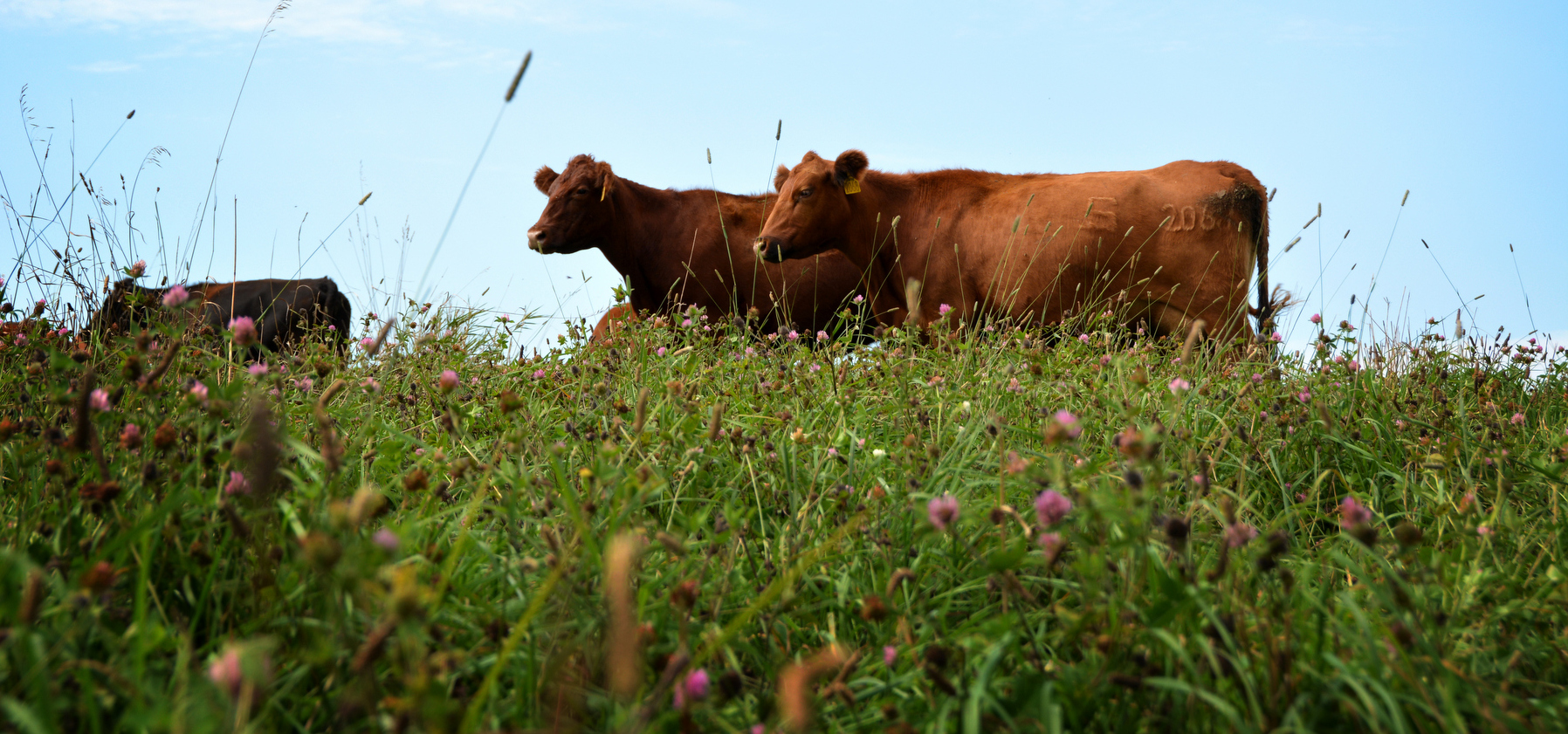
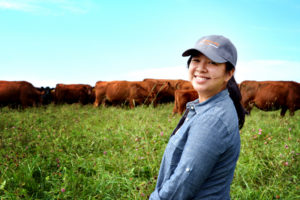
Christine Su is an entrepreneur and CEO of PastureMap, a Silicon Valley startup that creates cutting-edge ranch management software. PastureMap helps ranchers plan grazing, track forage, monitor herd performance, manage record keeping, and much more, all with the goal of saving ranchers time and making their operations more profitable. In the business of ranching—one that has not changed much in the past 100 years—PastureMap is a true breakthrough, and Christine’s innovative mindset and infectious enthusiasm are two of the root drivers of the company’s success.
Christine grew up in an entrepreneurial family, and she has had a lifelong curiosity about agriculture and the importance of food production. After building an impressive resume that includes undergraduate and graduate degrees from Stanford, a stint at McKinsey & Company, and experience in private equity, Christine combined her business expertise with her passion for agriculture to form PastureMap. PastureMap makes active or holistic management a more realistic option for ranchers, creating ripple effects far beyond the ranchers’ bottom lines—healthier grass, increased biodiversity, stronger communities, and continued viable domestic food production.
As you’ll hear in our conversation, Christine is a truly dynamic person whose passion for agriculture is matched by her intellect and entrepreneurial acumen. We cover all the details of PastureMap and how she built the business from a simple idea to a successful enterprise. We discuss her personal background and why she initially became so curious about agriculture around the world. We also chat about the ins and outs of active ranch management, and how a holistic approach to grazing can have far-reaching benefits beyond agriculture. As you’d expect, Christine also has plenty of excellent book recommendations related to agriculture, which I know you will enjoy.
For all of you ranchers out there, Christine is offering a 10% off coupon for a year’s subscription to PastureMap, and you can claim it by using the code “PRAIRIE” on the PastureMap website. Check out the episode notes for all the details. But whether you’re a rancher or not, I hope you’ll enjoy this episode. Christine is a perfect example of someone who has merged her passion and expertise into a financially successful business that is making the world a better place. Enjoy!
All photos courtesy of Christine Su
Click Here to Download on iTunes
—
Click Here to Download on Google Play
—
Click Here to Download on Stitcher
—
Episode Notes
Topics Discussed:
5:10 – How Christine came up with the idea for PastureMap
7:10 – Decision to take a break from business to work on a farm
9:45 – The importance of working ranches for healthy grasslands and a healthy planet
12:50 – Explaining grazing to environmentalists
15:30 – Impactful books about grazing
17:30 – Helping ranchers to see the value of PastureMap
20:20 – PastureMaps success stories
24:00 – How Christine expects PastureMap to evolve in the coming years
28:35 – Christine’s childhood and father’s entrepreneurial ventures
30:20 – Goals when entering Stanford
32:10 – Biggest surprise of entreprenuership
34:45 – Of all sectors, why Christine focused her start up on agriculture
37:55 – Heroes and mentors in the ag world
39:50 – Heroes of the business world
42:10 – Life lessons learned from working with agricultural producers
45:15 – Favorite books
46:15 – Favorite films
47:35 – Christine’s hobbies, including jumping in cold water
50:00 – Most powerful experience in the outdoors
52:10 – Favorite place in the West
52:50 – Best advice she’s ever received
53:20 – Request of the listeners
54:08 – Connect with Christine and PastureMap
- PastureMap
- Use discount code “PRAIRIE” to receive 10% off a base subscription!
- Defending Beef by Nicolette Hahn Niman
- Cows Save the Planet by Judith D. Schwartz
- Joel Salatin
- The Third Plate by Dan Barber
- David Montgomery
- Holistic Management by Allan Savory
- Dr. Allan Williams
- Todd Churchhill
- Russ Conser
- Wayne Rasmussen
- Grassfed Exchange
- Josh Reeves, Gusto CEO
- Angle of Repose by Wallace Stegner
- Wendell Berry
- Lentil Underground Liz Carlisle
- In the Mood for Love film
- Rotten on Netflix
- Jim Howell Podcast
Robert Krapfel – On Living A Purpose-Driven Life
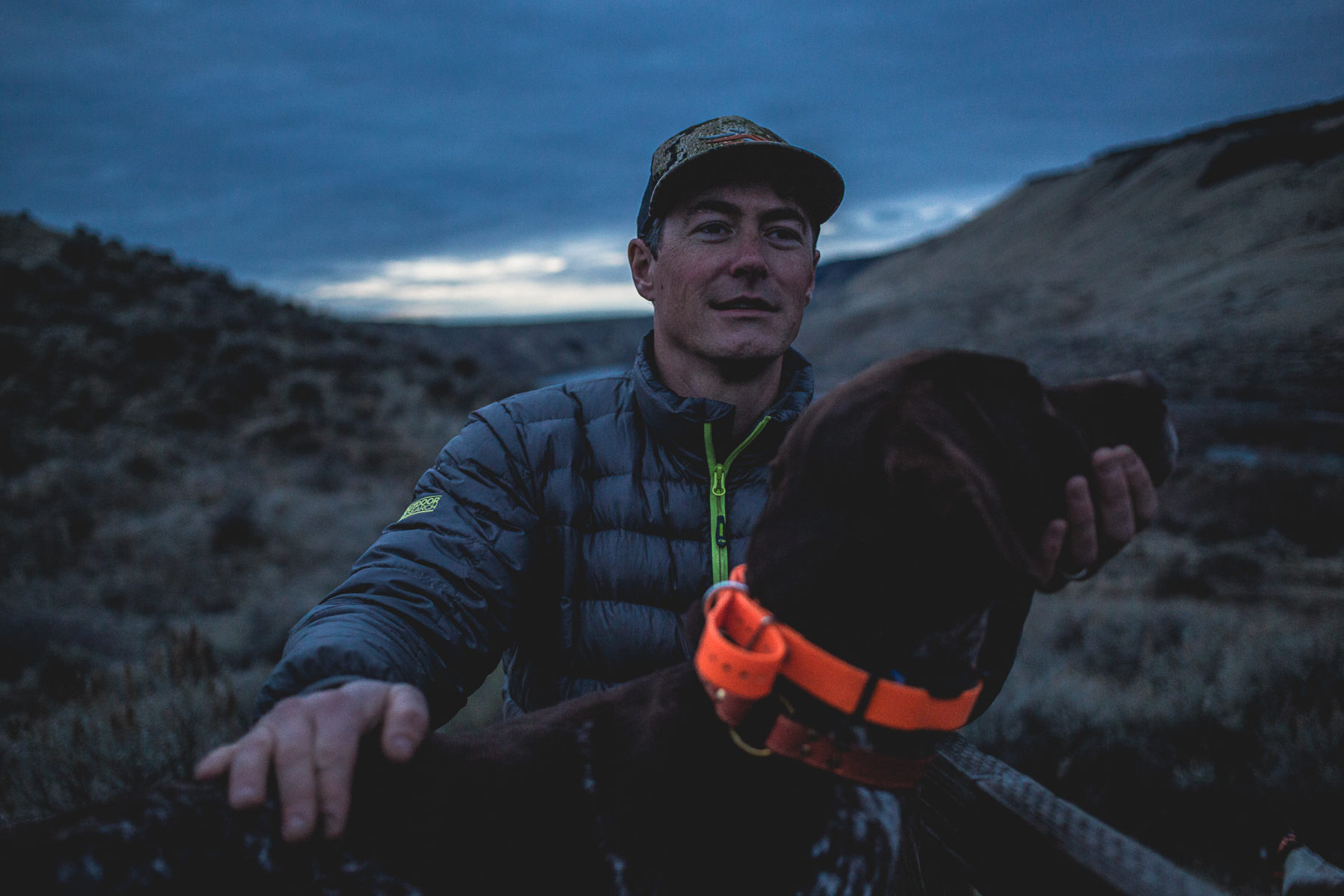
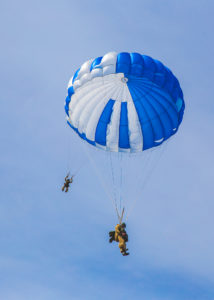
Robert Krapfel is a US Forest Service smokejumper—a member of the elite team of wildland firefighters who parachute into remote, burning landscapes to control some of our country’s most intense forest fires. Prior to joining the smokejumpers, Robert was a fish biologist with the US Fish and Wildlife Service, where he worked on restoring several species of fish in the lower Colorado River system. You may also know Robert as the husband of my previous guest Jillian Lukiwski, and if so, you’ve likely admired stunning photographs of them fishing, hunting, and exploring far-flung corners of the American West.
Growing up in Northern California, Robert was always focused on pushing himself hard in the outdoors, learning new skills, and establishing a sense of self-sufficiency in wild places. As a teenager, he taught himself to fish and hunt, and early in his career, he learned how to operate heavy machinery while rebuilding a remote government satellite station in the Arizona desert. Robert’s intense curiosity and action-oriented mindset have allowed him to build a life centered around adventure and rugged landscapes, while simultaneously being of service to our country and stewarding the forests of the West.
Because Robert has almost no social media presence, not many people outside his immediate circle of friends and family truly grasp what a unique life he leads, nor do they understand the vital role he played in the creation of Jillian’s blog and jewelry business, The Noisy Plume. Robert and Jillian are true partners in every sense of the word, and their approach to business, adventure, and living an authentic, purpose-driven life can be instructive for couples and individuals alike. They pursue their goals as a team and have sacrificed much along the way to turn their dreams into realities.
Robert is a perfect guest for this podcast, because his career and interests touch on almost everything that fascinates me—the West, adventure, service, creativity, hunting, fishing, travel, conservation, ecology, and plenty more. We obviously cover a lot in this episode, including the ins and outs of his becoming a smokejumper and his scariest experience while fighting fires. We discuss his work as a fish biologist, and how he and Jillian spent a year living in the Arizona desert in a rat-infested trailer. Robert also has a unique educational background, which we discuss in detail. And of course we talk about the creation of the Noisy Plume, and how Jillian’s and his vision for the project has evolved over time. And for a podcast that is always heavy on book recommendations, this episode is particularly full of good titles.
This is a great episode, so I know you’ll enjoy it. As I mentioned, Robert isn’t on social media, but you can catch glimpses of him every now and then on Jillian’s Instagram account, so be sure to follow her at @thenoisyplume. Enjoy!
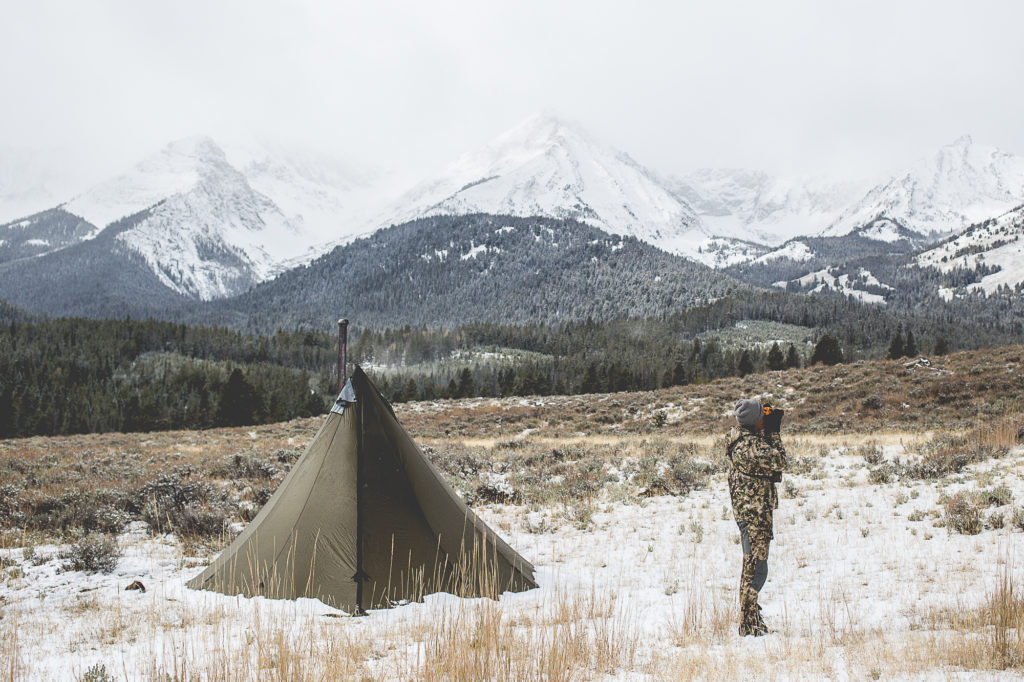
All photos courtesy of Jillian Lukiwski
Click Here to Download on iTunes
—
Click Here to Download on Google Play
—
Click Here to Download on Stitcher
—
Episode Notes
Topics Discussed:
5:50 – How he got involved in smokejumping
8:00 – How smokejumpers are selected
10:00 – Importance of integrity in smokejumping
11:20 – Robert’s desire to challenge himself physically and mentally
13:10 – Growing up in northern California
13:55 – Teaching himself to fish and hunt
16:10 – Importance of learning by doing
17:20 – Robert’s educational path
18:40 – College in Alaska
19:20 – Decision to attend Bible college in Montana
20:50 – Train jumping in Montana (and the ensuing accident!)
25:00 – Recovering from a broken back
27:00 – Finishing school at Wheaton College
28:00 – College versus all of Robert’s varied interests
28:40 – Eloping with Jillian
30:40 – Working as a fish biologist
32:20 – Moving to a satellite station in the desert
33:00 – Endangered fish in the lower Colorado
35:00 – Arriving at the abandoned, rat-crap covered trailer
37:20 – Lessons learned from the time in Arizona
39:25 – Marriage benefits of living in stressful conditions
40:30 – Robert’s role in the creation of The Noisy Plume
43:20 – Original versus current vision for The Noisy Plume
46:25 – The importance of authenticity
47:00 – Why Robert avoids social media
48:25 – Robert’s choice to leave biology and focus completely on fire
50:30 – Rookie smokejumper training
54:30 – Tree climbing as a scary aspect of smokejumping
56:30 – Scariest experience fighting fires
1:02:30 – Readjusting to life after fire season
1:04:50 – Good books about fire
1:06:00 – Best biology books
1:08:30 – Favorite books about the West
1:10:50 – Favorite documentaries and films
1:12:50 – Unexpected hobbies
1:13:45 – Most powerful experience in the outdoors
1:15:40 – Favorite location in the West
1:17:45 – Best advice ever received
1:18:45 – Request of the listeners
- The Noisy Plume
- Youth by Joseph Conrad* (*When Robert refers to Conrad’s Typhoon, he actually meant this this book, Youth)
- US Forest Service Smokejumpers
- US Fish and Wildlife Service
- Young Men and Fire by Norman Maclean
- Razorback suckers
- Bonytail chub
- Tribe by Sebastian Junger
- The Big Burn by Timothy Egan
- John Muir
- Annie Dillard
- Seeing Nature by Paul Krafel
- Little Britches by Ralph Moody
- Laura Ingalls Wilder (Little House series)
- Zane Gray
- Always
- Road House (aka The Greatest Movie of All Time)
- Dolly Parton
- Jillian Lekiwski on Instagram
Jillian Lukiwski – Art and Adventure in the American West

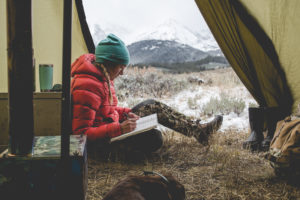
Jillian Lukiwski is a writer, photographer, and silversmith who lives near the banks of the Snake River in south central Idaho. Her quiet confidence and deliberate approach to living have allowed Jillian to blaze her own trail, creating a rewarding career and an authentic life centered around Idaho’s unique landscape. When not working, Jillian and her husband Robert enjoy the western lifestyle from every imaginable angle—bird hunting with their german shorthair pointers, big game hunting, fishing, running, horseback riding, mountain biking, caring for their farm animals, and cultivating their land, to name a few.
Big western landscapes have always been an important part of Jillian’s life—her father worked for Canada’s National Park Service, so she was raised with a deep appreciation for the outdoors and adventure. From an early age, she was riding—and falling off of—horses, shadowing her father in the backcountry, and building a personal foundation of self-sufficiency and toughness. As a young woman, she applied that ingrained tenacity to writing, photography, and creating jewelry, and has since built a loyal following of admirers and customers around the world through her website, The Noisy Plume.
We had a fun conversation and managed to cover a wide range of interesting topics. We discussed her life path that eventually landed her in southeastern Idaho, and we chatted about the unique nature of that region. We talked about her creative process, how she’s been mostly self-taught in all of her art forms, and how she is able to manage the distractions of social media and the online world. We chatted about the importance of being uncomfortable, and how self-imposed physical and mental challenges can help to inoculate yourself against the inevitable difficulties of life. Jillian is a voracious reader, so we had a great discussion about books, as well as how reading has contributed to her success as a writer. Be sure to check the episode notes for a full list of everything we discussed.
This was a fun and inspiring interview, and I hope you enjoy the conversation as much as I did!
All photos courtesy of Jillian Lukiwski
Click Here to Download on iTunes
—
Click Here to Download on Google Play
—
Click Here to Download on Stitcher
—
Episode Notes
Topics Discussed:
3:20 – Jillian’s home in Idaho
4:40 – How she ended up in southeastern Idaho
7:00 – Description of Pocatello and the surrounding landscape
9:10 – Growing up in Canada’s National Parks
10:50 – Childhood in the outdoors
13:00 – Lessons i toughness learned from her father
16:40 – Jillian’s university experience
18:50 – Jillian’s drive to be her own boss
19:45 – Her early attraction to jewelry
21:00 – First silversmithing class
22:50 – Being a self-taught artist
24:25 – Her quest for original ideas
26:20 – Avoiding social media distraction
28:20 – Daily routines and must-do activities
31:10 – Running
35:20 – Hunting and her relationship with her bird dogs
40:00 – The reality of posting hunting images on social media
44:10 – Why Jillian seeks out discomfort
48:35 – Stories of suffering and benefits of those experiences
50:30 – Advice for those seeking a life similar to Jillian’s
52:15 – Favorite books
56:20 – How reading has affected her writing
59:45 – More books
1:01:00 – Favorite movies
1:03:15 – Unexpected talents
1:04:30 – Most powerful experience in the outdoors
1:06:45 – Favorite location in the West
1:09:20 – Biggest challenge facing the West
1:12:00 – Jillian’s request of the listeners
1:12:59 – Connect with Jillian online
- The Noisy Plume
- Jillian on Instagram
- Pocatello, Idaho
- Canadian National Parks
- The Wolf in the Parlor by Jon Franklin
- Alpha film trailer
- And So I Hunt by Jillian Lukiwski
- Ladies of the Canyons by Lesley Poling-Kempes
- Two in the Far North by Margaret Murie
- Claiming Ground by Laura Bell
- Ernest Hemingway
- Mary Oliver
- Dakota by Kathleen Norris
- The Cloister Walk by Kathleen Norris
- Where the Rivers Change by Mark Spragg (this is the one we couldn’t remember the name of)
- Unbranded
- Ben Masters podcast interview
- The River and The Wall
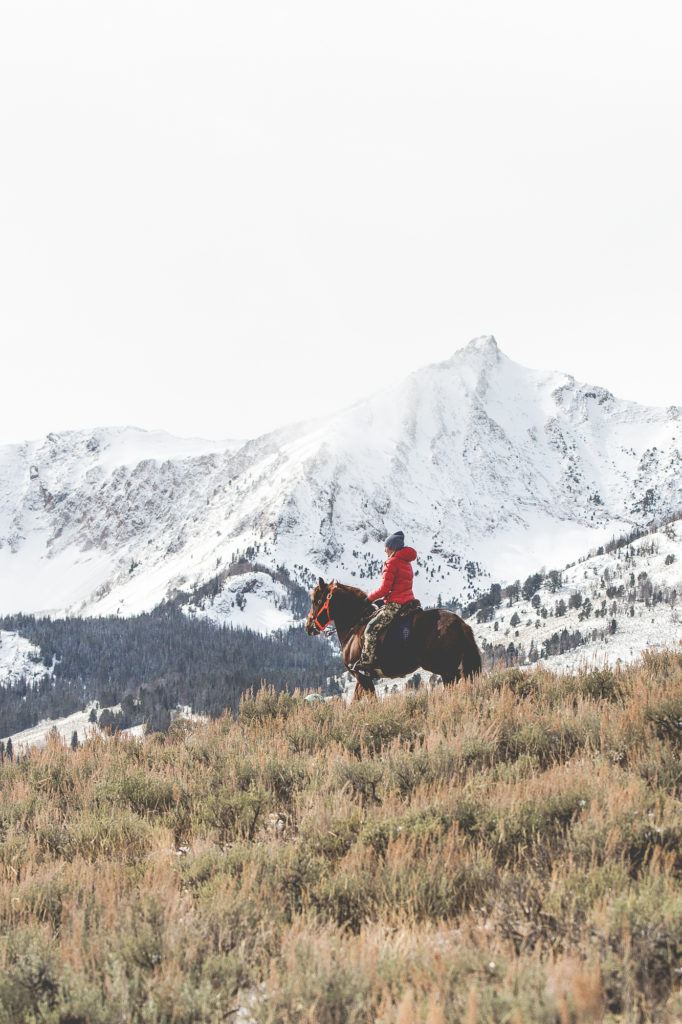
Matt Barber & Joel Doub – Stewards of a Fly Fishing Legacy
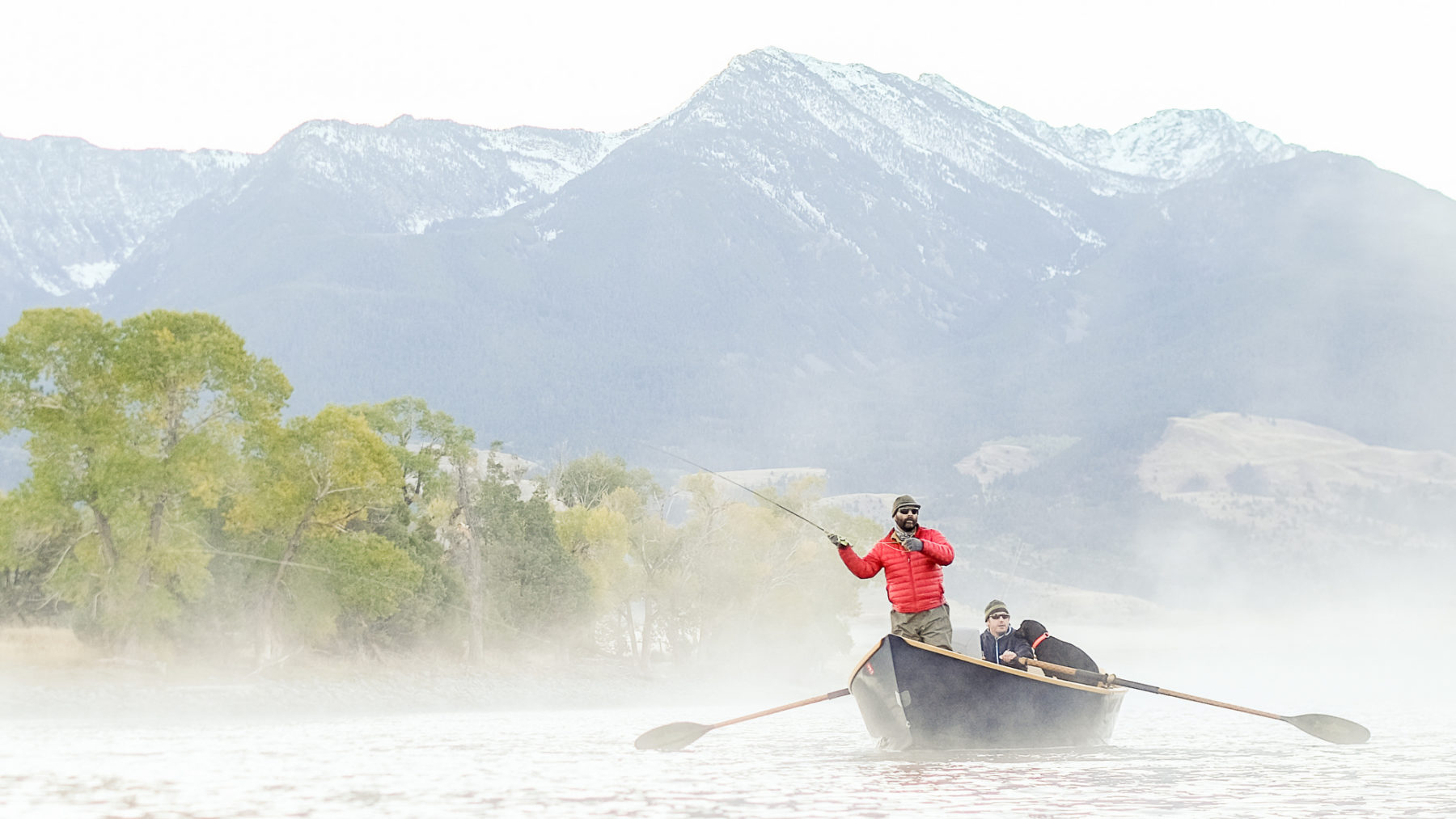
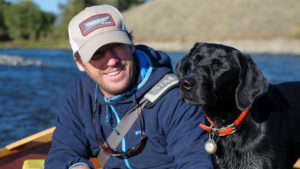
Matt Barber and Joel Doub are the owners of Tom Morgan Rodsmiths, a Bozeman-based fly rod company known for its unyielding commitment to quality, craftsmanship, and enduring performance. The duo purchased the company in early 2017 from Tom Morgan, a fly fishing legend who, along with his wife Gerri, built the company into one of the world’s most unique and renowned rod builders. Rather than focus on the latest fads or selling a high volume of products, Tom was dedicated solely to building the highest quality rod, one that could be passed on from generation to generation, decade after decade.
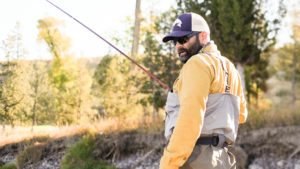
You may be surprised to learn that Matt and Joel are not fishing industry veterans—their previous careers were in education and medical device sales, respectively. But when Tom Morgan decided to sell the company, Matt and Joel’s passion for fly fishing, their willingness to learn from the best, and their commitment to continuing the company’s legacy allowed them to stand out from the crowd of competing buyers. To everyone’s dismay, Tom passed away unexpectedly soon after the sale of the company, but only after imparting his wisdom, craftsmanship secrets, and high standards to Matt and Joel. Building on Tom and Gerri’s rock-solid foundation, the company is now entering its next phase, and the future has never looked brighter.
Matt and Joel were in Denver for the annual Fly Fishing Show, so we met up to chat about the company and their journey into fly fishing entrepreneurship. We talked at length about Tom and his laser-like focus on quality, and how he was willing to snap a rod in half if it did not meet his high standards. We chatted about the “secret” to making these rods, which mostly boils down to being willing to work harder than anyone else. We talk about Tom’s unique partnership with his wife Gerri, and how the couple went about transferring decades of knowledge and experience to Matt and Joel. We discuss the company’s unique business model, and how it flies in the face of most mainstream, MBA business theories. And as usual, we discuss favorite books, films, crazy outdoor experiences, and plenty more.
This was a very fun conversation, and I’m excited to watch the company continue to grow and thrive under Matt and Joel’s ownership. Be sure to check out the episode notes for everything we discuss, and follow Tom Morgan Rodsmiths on Instagram and other social media. Enjoy!
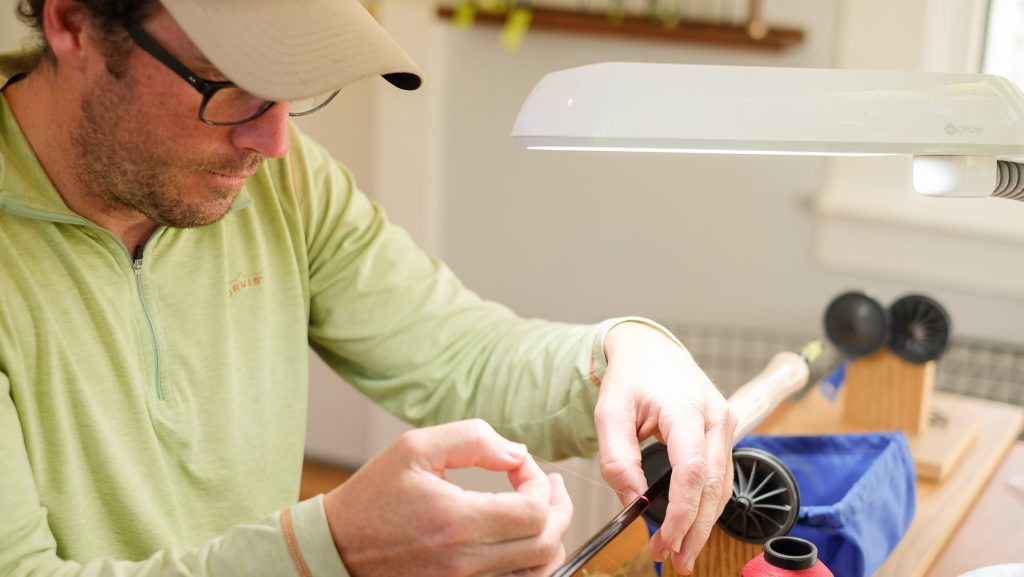
All photos courtesy of Paige McAfee
Click Here to Download on iTunes
—
Click Here to Download on Google Play
—
Click Here to Download on Stitcher
—
Episode Notes
Topics Discussed:
- Tom Morgan Rodsmiths
- Tom Morgan Rodsmiths on Instagram & Facebook
- Denver Fly Fishing Show
- Winston Fly Rods
- Limmer Boots
- Yvon Chouinard
- Power of Habit by Charles Duhigg
- Cate Havstad interview
- The O’Dell
- Duke Beardsley
- Duke Beardsley interview
- Casting for Recovery
- G Loomis
- Wallace Stegner
- Angle of Repose by Wallace Stegner
- The River Why by David James Duncan
- Cormac McCarthy
- All the Pretty Horses by Cormac McCarthy
- A River Runs Through It by Norman Maclean
- Platoon
- I Like Killing Flies
- Rivers and Tides
- Jim Howell interview
- Mark Maggiori interview
- Article from The Drake Magazine
Cate Havstad – Cultivating Creativity & Craftsmanship
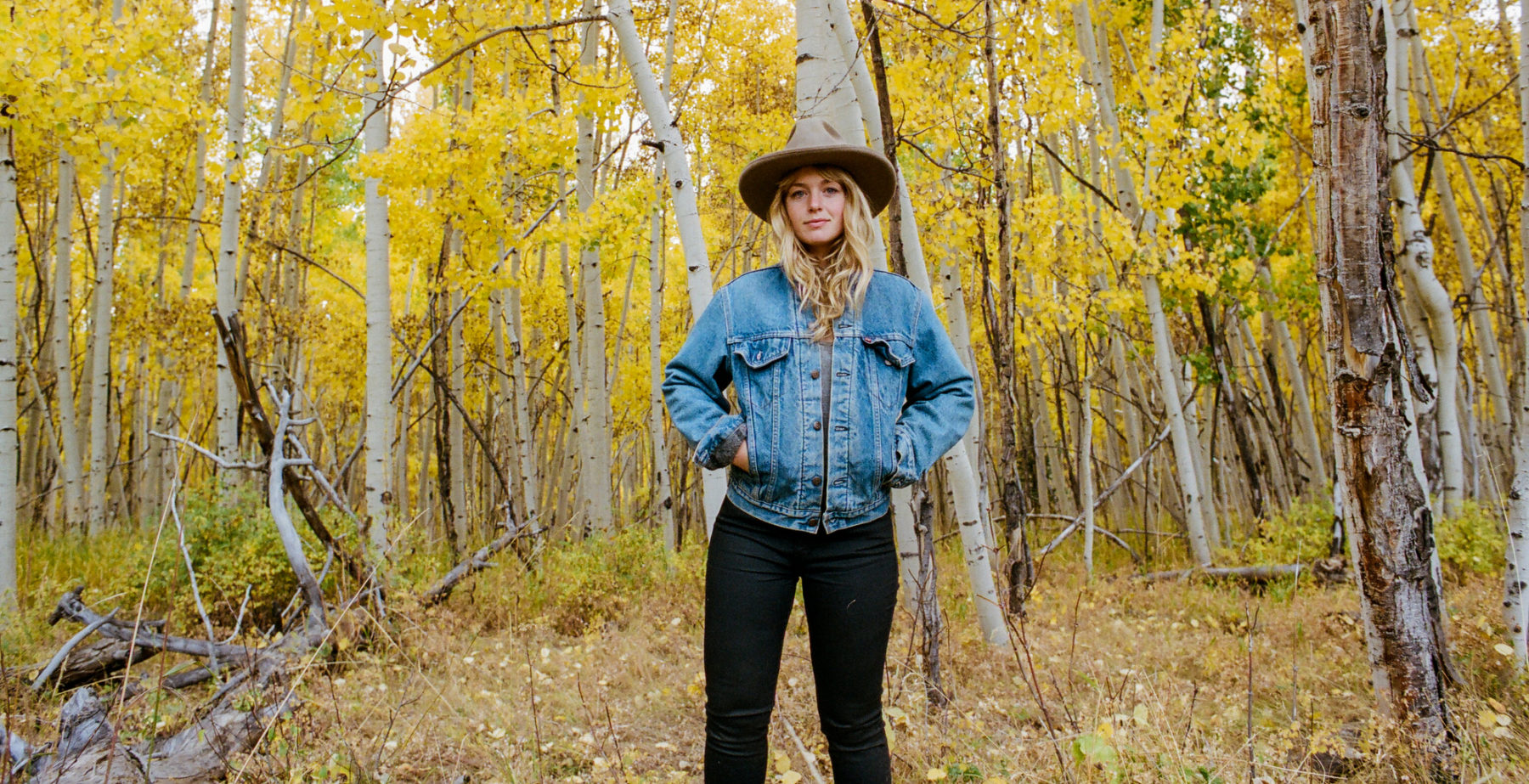
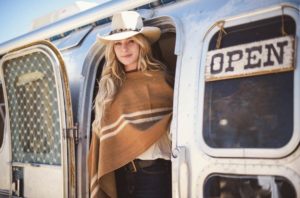
Cate Havstad is a hat maker and farmer based in central Oregon whose abundant curiosity, creativity, and love of place have allowed her to transform her passions into a full-time and fulfilling career. As a hat maker, Cate’s unique style and unwavering commitment to quality have attracted customers ranging from music stars like Gillian Welch and Nikki Lane to hard-working ranchers and farmers throughout the American West. As a farmer, Cate and her partner are deeply committed to regenerative agriculture and the positive impact that their local efforts can have on a global scale. It’s safe to say she’s living a life guided by purpose and passion.
Born and raised in northern California, Cate was a driven athlete in her youth, as evidenced by her desire to be the first woman to play in the NBA (that’s the NBA, not the WNBA). As a young woman, a fortuitous series of events landed her in a hat maker’s workshop, where she applied that same focus and drive toward learning the craft of hat making. After accumulating experience and confidence as an apprentice, she struck out on her own and now creates some of the most sought-after, stylish, and functional hats on the market today. Cate’s life and work are closely connected to the landscape of central Oregon, and her other job as an organic farmer has given her a deep understanding of the role that regenerative agriculture can play in conservation, community building, and reversing climate change.
As you’ll hear in our conversation, Cate is extremely curious, well-read, and and knowledgeable on a wide range of subjects. We talk about her journey as a hat maker, and how she cultivates creativity and consistent production in a world filled with an increasing number of distractions. We discuss regenerative agriculture and how many people, including well-meaning environmentalists, don’t fully understand the importance of farmers and ranchers in the conservation movement. Cate is a devoted meditator and runner, so we talk about how both of those practices have improved her creativity and outlook. We also chat about Wendell Berry, Michael Pollan, Steven Pressfield, and how those authors’ works have impacted her life. There’s a lot to learn in this episode.
This was a fun conversation that could have continued for hours. Be sure the check the episode notes below for links to everything we discussed—it’s a long list! Hope you enjoy!
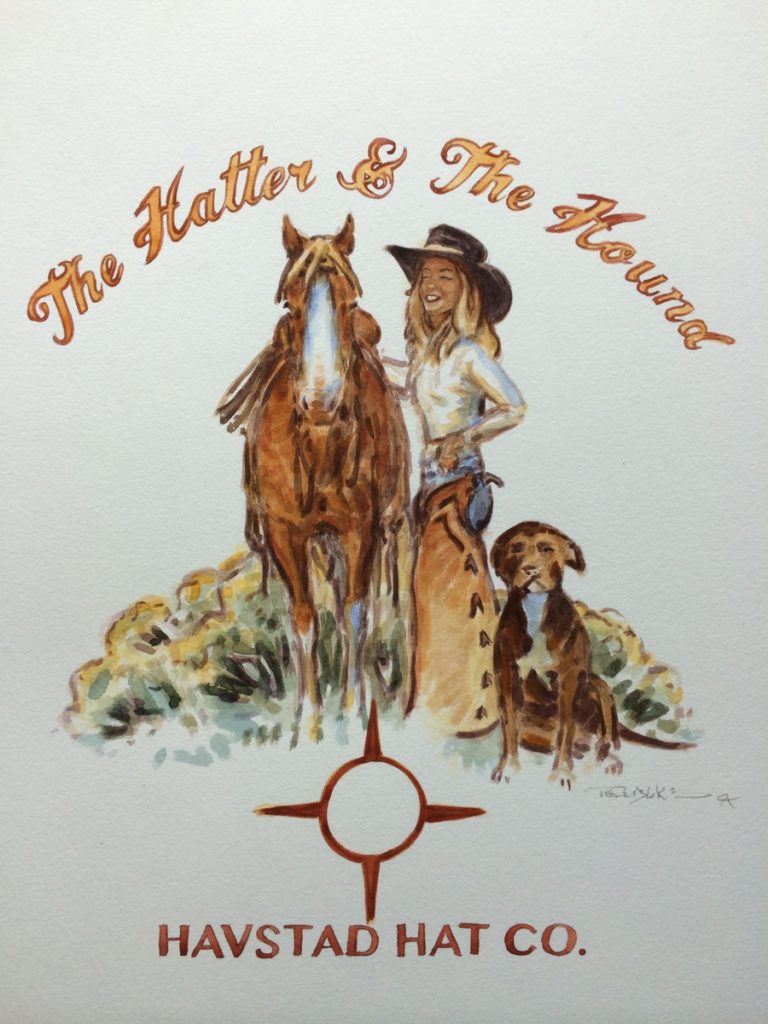
Header photo by Amanda Leigh Smith, others courtesy of Cate Havstad
Click Here to Download on iTunes
—
Click Here to Download on Google Play
—
Click Here to Download on Stitcher
—
Episode Notes
Topics Discussed:
- Cate Havstad on Instagram
- Havstad Hat Company
- Casad Family Farms
- Willy Tea Taylor
- The War of Art by Steven Pressfield
- Headspace
- Sit Like a Buddha by Lodro Rinzler
- Walk Like a Buddha by Lodro Rinzler
- Wendell Berry
- The Unsettling of America by Wendell Berry
- Michael Pollan
- In Defense of Food by Michael Pollan
- Jim Howell interview
- Savory Institute
- Braiding Sweetgrass by Robin Wall Kimmerer
- Taylor Keen interview
- The Dirty Life by Kristen Kimball
- Kristen Kimball
- Deep Work by Cal Newport
- Travels with Charley by John Steinbeck
- The Monkey Wrench Gang by Edward Abbey
- Temperance Creek by Pamela Royes
- Unbranded
- Ben Masters interview
- Unbroken Ground
- 13th
Sarah King – Collaborative Conservation in the American Southwest
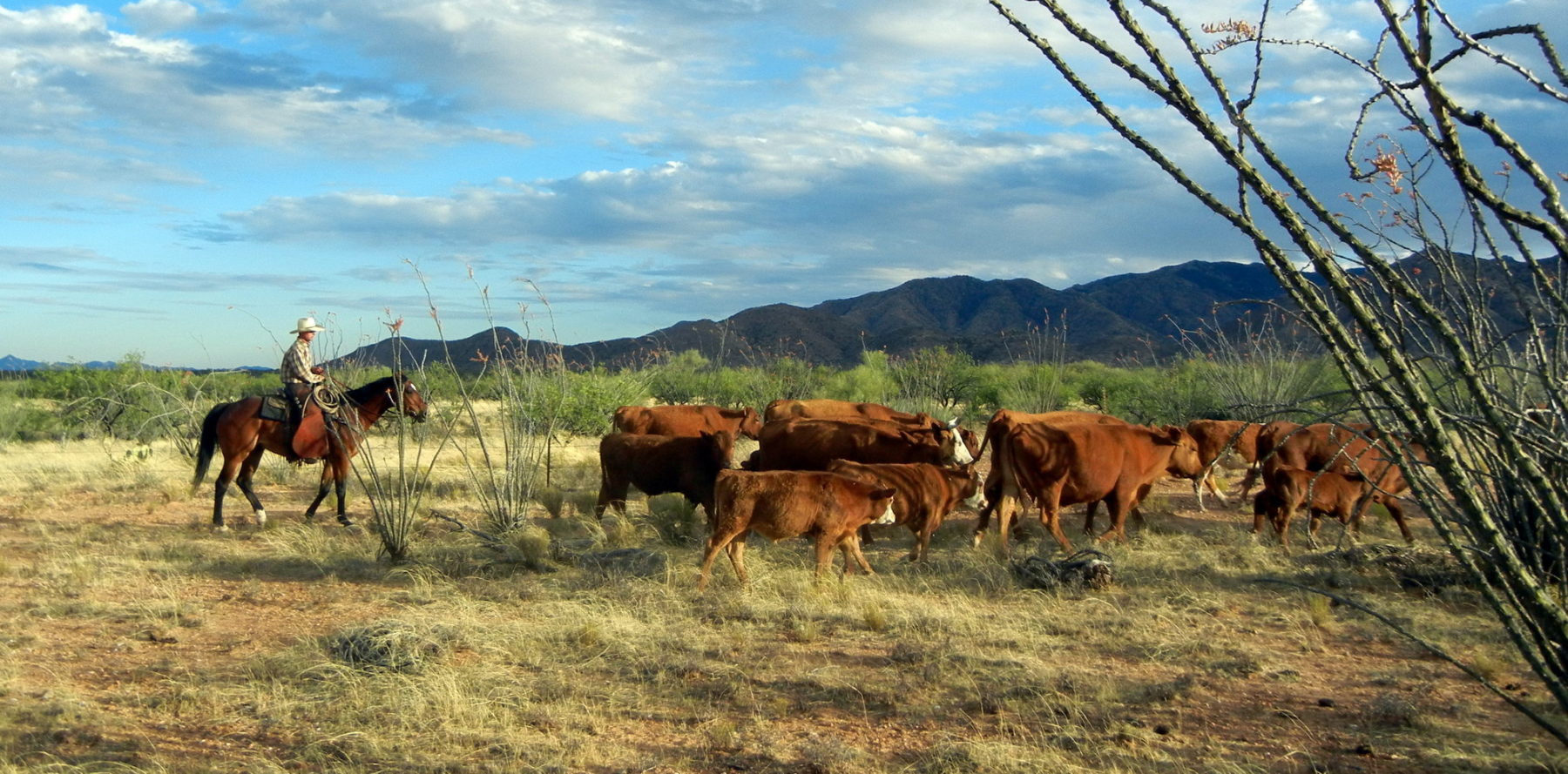
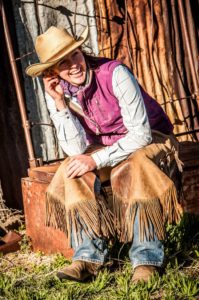
Sarah King is a rancher, conservationist, wife, and mother of two who lives and works on her family’s 55,000-acre cattle ranch in southern Arizona’s Altar Valley. The King’s Anvil Ranch was established in 1895 and has operated successfully within their family for generations, setting an example of how to run a financially viable agricultural business, while simultaneously protecting the long-term ecological health of their vast desert ranch. The Kings understand that in order for their business to thrive, the land must thrive, and they are leaders in pursuing a variety of outside-the-box land stewardship techniques, including the focused use of prescribed fires.
The King family spearheaded the creation of the Altar Valley Conservation Alliance, a cutting-edge land conservation organization that collaborates with a wide range of stakeholders, including private landowners, ranchers, government entities, conservation non-profits, and environmental advocacy groups. Thanks to focused, diligent efforts over the course of two decades, the AVCA has managed to bring together groups that have historically been at odds, allowing them to focus on shared goals and creative solutions to complicated challenges, rather than dwelling on their differences. As you’ll hear Sarah explain, AVCA understands that open, honest, face-to-face communication has been the key to tackling the Altar Valley’s complex challenges, and their success gives me hope that other organizations throughout the West can adopt their approach and enjoy the same success.
This was a very enlightening episode for me, because I personally just don’t know enough about the landscapes and heritage of the deep southwest. We dig into many of the details of the King’s Anvil Ranch and its operation, including the unique climate and ecology of the Arizona desert. Sarah explains how the AVCA came to be, and offers some insights into exactly what they do and how they’ve managed to have such success. We discuss Sarah’s personal background, specifically how an east coast native ended up on an expansive cattle ranch in Arizona. We talk about the benefits of raising children on a ranch, and the lessons she hopes to impart as they grow up closely connected to the land. Given that the ranch is located less than 40 miles from the Mexico border, we discuss how illegal border crossings have a significant effect on the ranch’s operations. And, of course, we discuss favorite books and documentaries, with links to everything in the episode notes.
I had such a great time chatting with Sarah, and I walked away from the conversation with a much deeper understanding of ranching, conservation, and life in the American southwest. She and her colleagues at AVCA are doing important, groundbreaking conservation work, so I encourage you to follow them and learn from their efforts. Also, be sure to follow Sarah on Instagram—on top of everything else, she’s a talented photographer, too. Enjoy!
Header photo courtesy of Sarah King, other courtesy of Roni Ziemba
Click Here to Download on iTunes
—
Click Here to Download on Google Play
—
Click Here to Download on Stitcher
—
Episode Notes
Topics Discussed:
4:10 – King’s Anvil Ranch
5:20 – History of the ranch
7:10 – Details on the ranching operation
10:30 – History of Altar Valley Conservation Alliance
13:15 – Events leading to the Alliance’s formation
16:30 – Importance of fire in the Altar Valley
20:00 – Examples of AVCA collaborative projects
25:20 – Why has AVCA been able to be successful where others have not?
28:45 – Specific reasons for AVCA’s success
31:15 – The importance of private land in the West
35:30 – How Sarah ended up in the west, working in ranching
39:00 – Sarah’s college thesis on women dude ranchers
41:15 – Realities of moving West from the east coast
42:30 – Benefits of raising children on a ranch
45:30 – Sarah’s photography
47:15 – Illegal immigration and its effects on the King’s ranch
55:50 – Favorite books
57:55 – Favorite documentaries
59:35 – Surprising activities
1:00:30 – Most powerful experience in the outdoors
1:03:30 – Best advice ever received
1:05:00 – Sarah’s request of the listeners
1:06:00 – Connect with Sarah online
- Sarah King on Instagram
- King’s Anvil Ranch on Facebook
- AZ Beef Council Article on Sarah and Joe King
- Altar Valley Conservation Alliance
- Altar Valley Watershed Framework
- AVCA award article
- Altar Valley Global Rangelands Collection
- Rolling Stone video featuring King’s Anvil Ranch
- Malpai Borderlands Group
- Erik Glenn podcast interview
- The Big Burn by Timothy Egan
- Wildfire TED talk
- Davidson College
- Elkhorn Guest Ranch – Montana and Arizona
- Ladies of the Canyons by Lesley Poling-Kempes
- Ivan Doig
- House of Sky by Ivan Doig
- Heart Earth by Ivan Doig
- A River Runs Through It by Normal Maclean
- Half Broke Horses by Jeannette Walls
- The Glass Castle by Jeannette Walls
- Buck documentary
Charles Post – Stewardship, Science & Storytelling
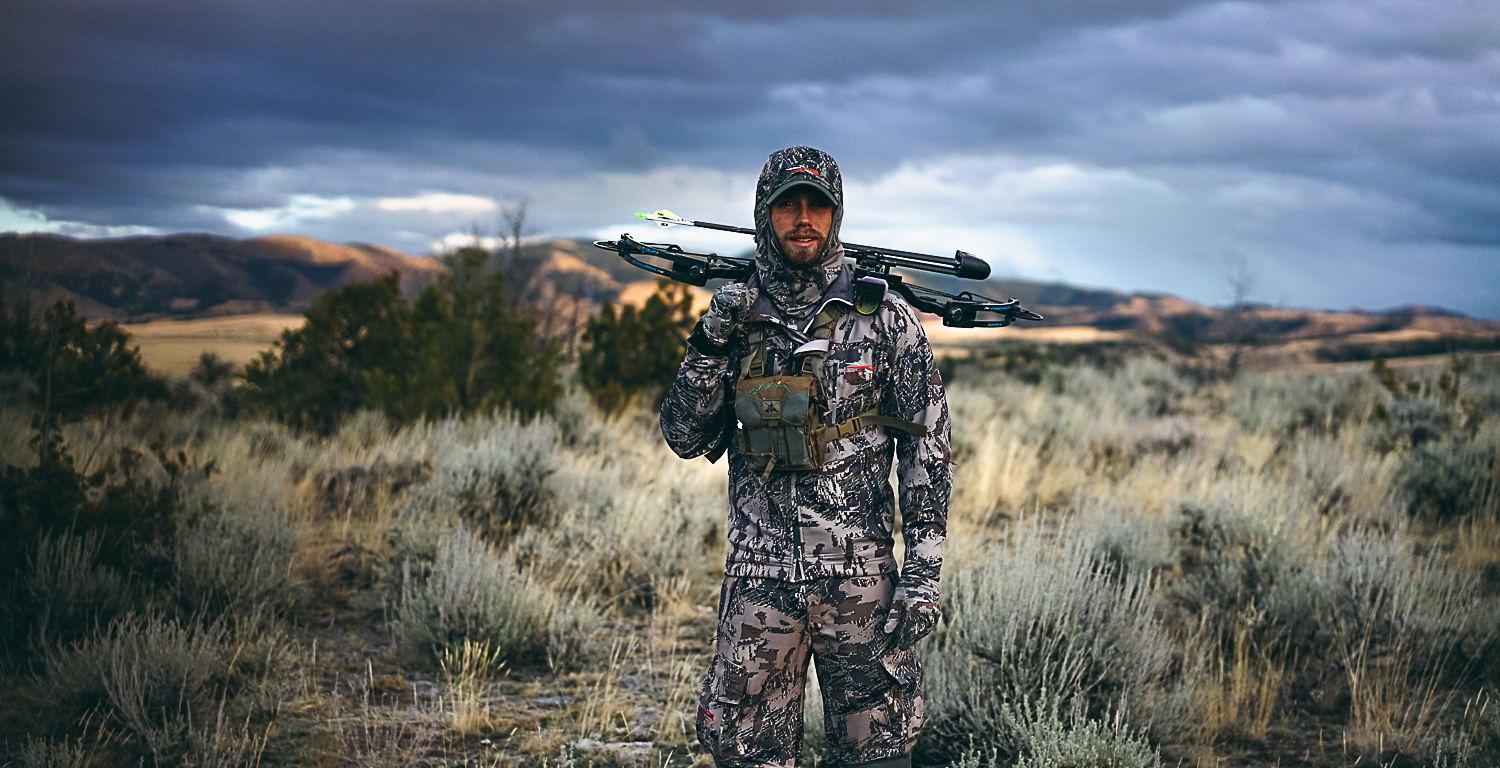
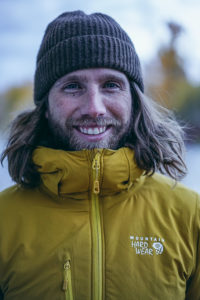
Charles Post is an academically trained ecologist with a gift for communicating complex and sometimes emotionally charged issues in a thoughtful manner to diverse audiences. Whether he’s discussing the intricacies of ranch management, the ecological implications of ethical hunting, or controversies surrounding the BLM’s wild mustang program, Charles has honed his ability to consider all sides of issues, then educate the public in a style that is positive, comprehensive, and intellectually honest. His academic credentials, combined with his photography, writing, filmmaking, and popular social media channels have made Charles a rising star in the world of conservation.
Born and raised in northern California, Charles has enjoyed a deep connection with Western landscapes for as long as he can remember. He grew up hunting, fishing, and exploring the seascapes and mountain ranges of the West Coast, then earned both a Bachelors and Masters in ecology from UC Berkeley. After considering pursuing a PhD followed by a career in academia, Charles changed course and pursued a less traditional track that melded his two passions of science and storytelling. Since then, he has settled in Bozeman, Montana where he works on a wide range of projects that all tie back into conservation and stewardship in the American West.
Charles and I talked for well over an hour, and could’ve easily continued for several more. We discuss his recent work for Filson covering Ranchlands, a progressive, forward-thinking ranching operation in southern Colorado. We also chat about the ecological importance of ranching for Western landscapes and the progress that Charles has made trying to change some of the unfounded negative impressions of ranching and livestock. We talk about his recent elk hunt, and how that adventure was one of the richest, most meaningful experiences of his life. Charles speaks fondly about his relationship with Ben Masters, who helped him break into the filmmaking world. It also turns out that we have a shared love of the American Dipper (which is a bird, for those of you out of the loop), and we nerd out on that subject for a few minutes. As usual, we discuss favorite books, films, and the best advice he’s ever received.
If you’re a long-time listener, you will love this episode… and if you’re brand new, I hope you will, too! Be sure to check out Charles on Instagram at @charles_post and check the episode notes for everything we discuss. Enjoy!
All images courtesy of Rachel Pohl
Click Here to Download on iTunes
—
Click Here to Download on Google Play
—
Click Here to Download on Stitcher
—
Episode Notes
Topics Discussed:
5:10 – How Charles describes his work
6:30 – Why Charles identifies as an ecologist
8:50 – Science versus communicating to the mainstream
10:30 – Charles experience with Ranchlands and thoughts on ranching
17:45 – How Charles tells the ranching story
20:45 – Resources for learning more about ranching
21:55 – Discussion about wolves’ effects on Yellowstone
24:35 – Where Charles grew up
25:50 – Charles’ connection to Gifford Pinchot
29:40 – Hunting from a conservation perspective
32:25 – Modern Huntsman
35:15 – Interplay between public and private land
41:40 – How science shaped his ability to be objective
43:40 – His approach to social media
49:45 – The importance of Charles’s sponsors and supporters
54:30 – Charles’s personal history with hunting
1:01:40 – Favorite books
1:08:10 – Weird habits and quirks
1:09:30 – American Dipper nerd-fest
1:12:20 – Most powerful experience in the outdoors
1:16:00 – Best advice he’s ever received
1:19:25 – Charles’s request of the listeners
1:20:50 – Connect with Charles online
- Charles Post – Website & Instagram
- US Berkeley Ecology
- Ranchlands
- Ranchlands Filson Campaign
- The Lasater Philosophy of Raising Cattle by Laurence Lasater
- How Wolves Change Rivers
- Ben Masters podcast
- Jim Howell podcast
- For the Love of Land by Jim Howell
- Gifford Pinchot
- Rachel Pohl
- KEEN
- Mountain Hardwear
- The Big Burn by Timothy Egan
- The Wilderness Warrior by Douglas Brinkley
- Undaunted Courage by Stephen Ambrose
- Sand County Almanac by Aldo Leopold
- Desert Solitaire by Edward Abbey
- The Monkeywrench Gang by Edward Abbey
- All the Wild That Remains by David Gessner
- David Gessner
- The Great Animal Orchestra by Bernie Krause
- Elk River
- Island Earth
- Sonic Sea
- Chasing Coral
- Chasing Ice
- American Dipper
- Sky Migrations
Mark Maggiori – A Fresh View of the American West

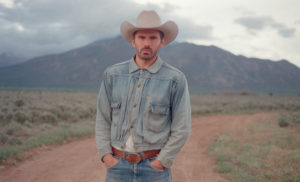
Mark Maggiori has taken the western art scene by storm with his dramatically realistic paintings of cowboys, horses, landscapes, and scenes from the American West. But painting is only a small part of Mark’s journey as a professional artist—he is also an accomplished director, filmmaker, drawer, photographer, and musician, working for companies like Disney as an illustrator and fronting a major-record-label rock band. To make his story even more interesting, Mark was born and raised in France, and is a relative newcomer to the western United States.
When he was 15, Mark took a road trip across America with his adventurous uncle, igniting his passion for Western landscapes and planting the seed of his western art career that would flourish two decades later. Between then and now, he has demonstrated an uncanny ability to dive headfirst into a wide array of artistic endeavors with single-minded focus and work ethic, enjoying success at every level. At little over three years ago, at age 36, all of Mark’s talents and experiences melded together when he decided to try and paint his first cowboy. In what he describes as an epiphany, Mark immediately knew he had found his true identity as an artist.
Mark and I had a fun conversation. We talk about all the stages of his prolific career as an artist, and how he has approached each one with a laser-like focus and uncompromising work ethic. Mark explains how he discovered his talent for drawing—a talent that he had no idea he possessed until after he had enrolled in art school. We also chat about how being new to America has afforded him a fresh perspective on the people and landscapes of the American West, a perspective that shines through in his paintings. He gives details on his workman-like approach to painting and ensuring the historical accuracy of his work, and how exercise helps to fuel his creativity and work ethic. As usual, we cover favorite books, documentaries, and the craziest thing that’s ever happened to him in the outdoors, which is a ridiculous and pretty damn scary story!
Be sure to check out the webpage for links to all of Mark’s work, his upcoming solo show, and everything we discuss in this episode. Hope you enjoy!
All images courtesy of Mark Maggiori
Click Here to Download on iTunes
—
Click Here to Download on Google Play
—
Click Here to Download on Stitcher
—
Episode Notes
Topics Discussed:
5:11 – Growing up in France
6:30 – Road trip across America
11:20 – Mark’s interests as a teenager
12:40 – The attraction to art school
15:40 – Discovering his talent for art
18:45 – Learning work ethic
20:30 – Working for Disney
22:45 – Working in music videos
23:45 – Performing music and creating art
24:30 – Mark’s time with Pleymo
27:25 – Leaving music
32:00 – Coming to America to make a film
35:40 – Demolition derbies and rodeos
36:50 – Starting to paint cowboys
41:00 – Building his following through Instagram and networking
44:00 – Expanding to new galleries
45:00 – Secret of painting clouds
47:55 – Keeping his work accurate
50:00 – Starting to paint Native Americans
54:30 – Mark’s daily routine
58:45 – Favorite books
1:01:00 – Favorite documentaries
1:02:30 – Favorite place in the West
1:03:50 – Most powerful experience in the outdoors
1:05:30 – Getting chased by crazy people in Louisiana
1:10:15 – Mark’s request of the listeners
1:12:50 – Connect with Mark online and learn about his upcoming art show
- Mark Maggiori – Website & Instagram
- “Lonesome Souls” — Mark’s upcoming solo show
- Fontainebleau, France
- Maxwell Alexander Gallery
- Gerald Peters Gallery
- Trailside Galleries
- Pleymo
- Desert Solitaire by Edward Abbey
- Silent Spring by Rachel Carson
- An American Idea by Kim Heacox
- Emerald Mile by Kevin Fedarko
- Lassoing the Sun by Mark Woods
- Unbranded
- Duke Beardsley interview
- Stephen Smith interview
Tyler Sharp, Part II – Modern Huntsman
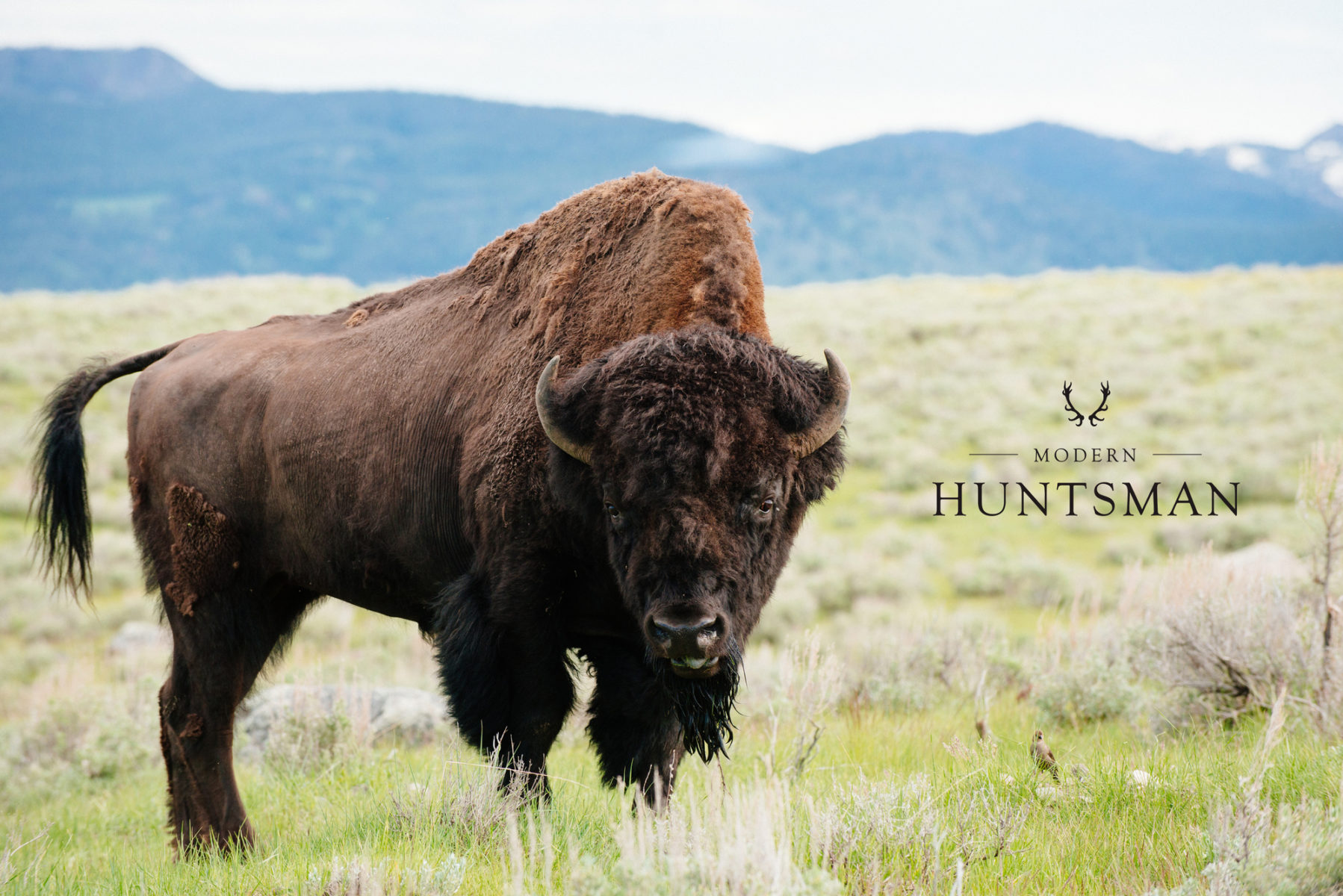
Tyler Sharp, Part II – Modern Huntsman
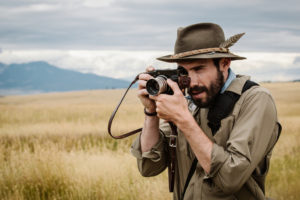
Modern Huntsman is a biannual publication and online forum for conservationists, creatives, and outdoor enthusiasts. If you enjoy this podcast and my guests’ depth of thinking on topics related to the natural world, then you’re going to love Modern Huntsman. Through thoughtful writing, captivating photography, and elegant design, Tyler and his all-star team intend to improve the perception of hunting in our society by highlighting its thoughtful and conservation-focused aspects, which are often ignored by established media.
I like to hunt, although I’m not obsessed with it like I am with endurance sports. But my work in conservation and deep reading of natural history have given me a firsthand appreciation for the importance of hunting, and the vital role it plays in conserving landscapes and species around the world. Without the efforts of visionary hunters like Theodore Roosevelt, the healthy wildlife populations we enjoy here in the American West would be a mere fraction of what they are today, if they existed at all. Thanks to their deep respect for wildlife born from their love of the sport of hunting, TR and his contemporaries set in motion a conservation ethic that continues to grow and evolve. Now, over 100 years later, Modern Huntsman will carry that ethic forward.
Once again, Tyler and I had a wonderful conversation, and I was incredibly impressed with his ability to discuss complex, sometimes emotionally charged issues in a respectful, intelligent, and non-arrogant tone. Of course we discussed the details of Modern Huntsman, its origins, and why there is a need for such a publication. We chatted about Modern Huntsman’s current Kickstarter campaign, which I highly recommend you support—links are in the notes. We also talked in depth about some of the misconceptions around hunting and specifics about why hunting is so important for conservation throughout the world. And just like last time, Tyler had some excellent book recommendations.
This was a fun and enlightening conversation, so I hope you enjoy. Check out the episode notes for links to everything, and be sure the check out the Modern Huntsman Kickstarter page, watch the film, and support the project.
All images courtesy of Tyler Sharp & Modern Huntsman
Click Here to Download on iTunes
—
Click Here to Download on Google Play
—
Click Here to Download on Stitcher
—
Episode Notes
Topics Discussed:
Information Referenced
- Tyler Sharp – Website and Instagram
- Tyler’s First Mountain & Prairie Podcast episode
- Modern Huntsman Kickstarter page
- www.bit.ly/modernhuntsman
- Modern Huntsman on Instagram
- Drop Cap Design
- Ben Masters interview
- Camrin Dengel interview
- John Dunaway interview
- Stephen Rinella
- Theodore Roosevelt
- The Man-Eaters of Tsavo by John Henry Patterson
- The Ghost and the Darkness
- Something of Value by Robert Ruark
- The Old Man and the Boy by Robert Ruark
- Meditations on Hunting by Jose Ortega y Gasset
- Green Hills of Africa by Ernest Hemingway
- The Short and Happy Life of Francis Macomber by Ernest Hemingway
- The Snows of Kilimanjaro by Ernest Hemingway
- Out of Africa by Isak Dinesen
Scott Slusher – The Cowboys’ Cowboy Photographer
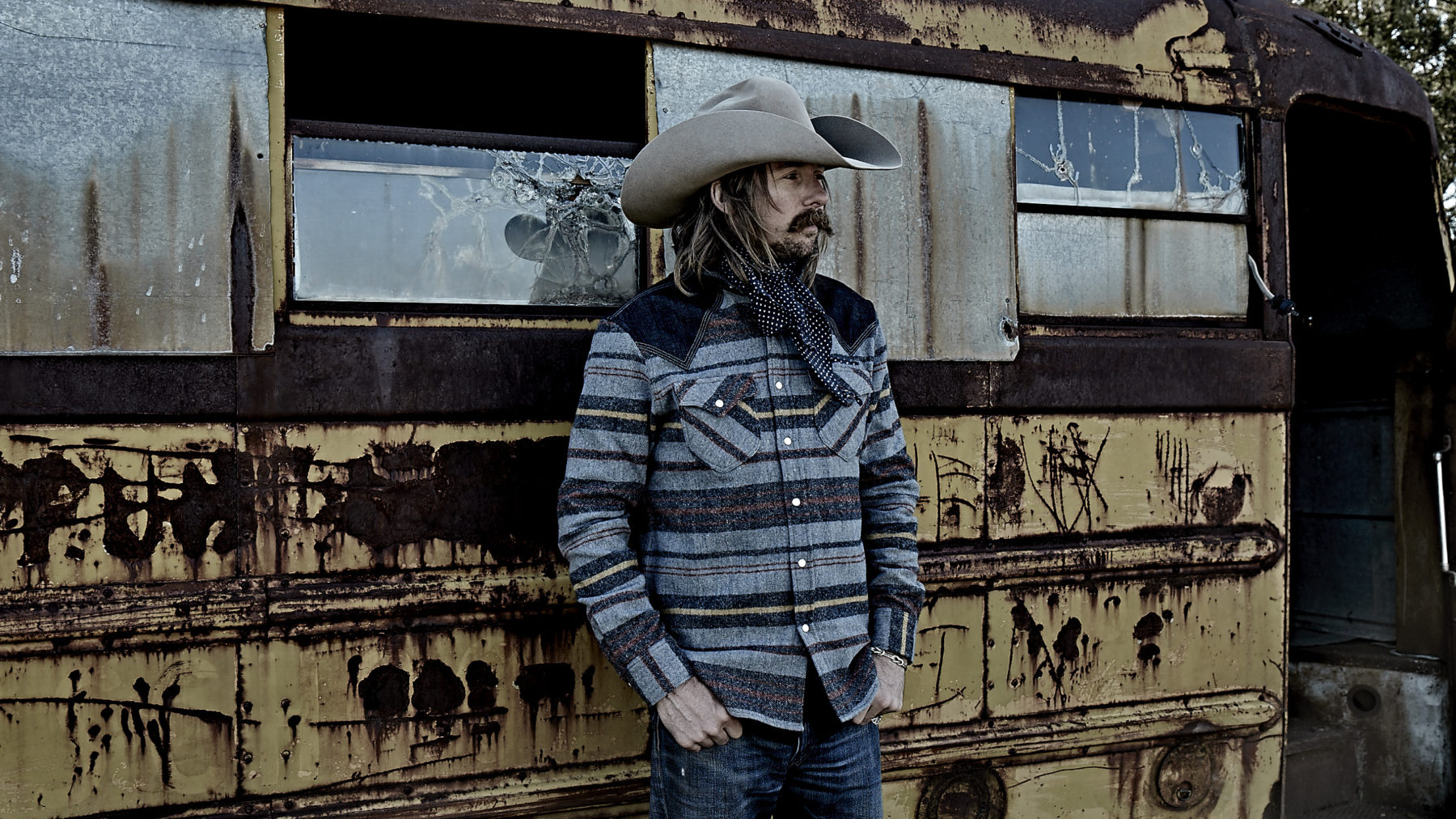
Scott Slusher – The Cowboys’ Cowboy Photographer
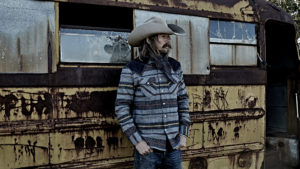
Scott Slusher is an Oklahoma native and Texas-based photographer who is best known for his stunning images of cowboys and life on working ranches. After seeing Scott’s work, it is crystal clear that he has a deep understanding of the ranching lifestyle and has invested more than his share of time out in the heat and dust, on horseback or in the branding pen. Given his immersion in the tough, hard-nosed world of ranching, you may be surprised to learn that Scott was trained as a fashion photographer and still works with a variety of big-name companies on their fashion and clothing line spreads.
So what allows Scott to have success in two worlds as diametrically opposed as ranching and fashion? Well, as you’ll hear in this interview, Scott has a habit of pursuing his interests with a single-minded intensity and curiosity, unafraid of getting in over his head, venturing outside his comfort zone, or working harder than expected. Combine those traits with endless energy and a knack for making friends with everyone he meets, and you’ll understand how Scott has managed to work his way onto iconic ranches, riding alongside and photographing some of the best ranch hands in the business.
Scott’s enthusiasm and love of people really come through in our conversation, so I know you’ll enjoy it. We talk about his childhood in Oklahoma and how his father’s work as a veterinarian and horse breeder shaped his outlook. We chat about his time as a photography intern and how he chose to dive head first into no-fun chores (like mopping the floor), and how that optimistic, high-energy approach has paid off time and again throughout his career. We also discuss how he broke into photographing cowboys, and how his respectful approach has allowed him to be accepted by ranch hands throughout the West. We cover a ton, so check out the episode notes for a full list of topics and links.
If you don’t already, be sure to follow Scott on Instagram at @slusherphoto—if you love the West and the ranching lifestyle, I can guarantee you’ll love his work. Hope you enjoy this episode.
All images courtesy of Scott Slusher
Click Here to Download on iTunes
—
Click Here to Download on Google Play
—
Click Here to Download on Stitcher
—
Episode Notes
Topics Discussed:
2:45 – How Scott describes his work
4:50 – Where Scott grew up
8:30 – Time working at a vet clinic
12:00 – Applying to art school in Dallas
14:00 – Finding focus in art school
18:00 – Work ethic during his first internship
22:30 – First time taking photos of cowboys
26:00 – Making folks feel comfortable during photo shoots
27:20 – How he broke into the cowboy culture
33:00 – Working at the Four 6s Ranch
36:15 – Importance of networking
40:00 – Close calls during ranch photography
44:45 – Close call during a rodeo
49:30 – Importance of social media in Scott’s career
1:04:00 – Important books
1:09:00 – Favorite films
1:14:00 – Words of advice to the listeners
1:15:00 – Connect with Scott online
Information Referenced
- Scott Slusher
- Scott’s Instagram and Facebook
- 6666 Ranch
- Teal Blake
- Pictures from the Costa Rican Rodeo
- Duke Beardsley
- Barbarian Days by William Finnegan
- Coyote America by Dan Flores
- Dan Flores
- The Rum Diary by Hunter S Thompson
- Unbranded
- Ben Masters
- Apaloosa
- Lonesome Dove
- Nacho Libre
- Big Lebowski
- Jeff Bridges
Duke Beardsley – Art in the Big, Bold American West

Duke Beardsley – Art in the Big, Bold American West
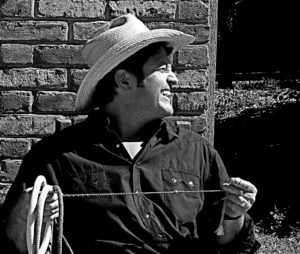
Duke Beardsley was well on his way to a career in medicine, when, just before med school, he took a hard turn onto a new path when he decided to pursue art as a full-time vocation. Since then, he has become one of the West’s most revered artists, producing paintings of cowboys, anglers, and the Western way of life in a style that is uniquely his own. His work is big, bold, and completely original, and it continues to grow and evolve in ways that surprise even Duke himself.
Thanks to a childhood spent between Denver and his family’s eastern Colorado ranch, Duke has been immersed in cowboy culture for as long as he can remember. He has been drawing non-stop since he could hold a crayon, and as a child (sometimes to the dismay of his parents) he demonstrated a proclivity for sketching western scenes on the walls of his family’s home. Duke is also a committed conservationist with a deep devotion to preserving the West’s landscapes and heritage. This eclectic mix of experiences and interests, combined with a formal art education, allows Duke to produce works that are ambitious, inspiring, and engaging.
I stopped by Duke’s Denver studio earlier this week, where we had a fun and wide-ranging conversation. We chat about his decision to change his career goal from medicine to art, and the value he gleaned from a formal art education. He explains that life-long obsession with drawing on walls, and he tells some stories about how, as an adult, drawing on walls has led to surprising professional opportunities. We talk about his artistic process, his meditation practice, and how he managed his extroverted personality in the solitary world of creating art. He also discusses why land conservation is an issue that is so near and dear to his heart, and offers up some excellent book recommendations.
This was a lot of fun and I really appreciate Duke inviting me into his studio. Be sure to check the episode notes for links to everything we discuss, and check out Duke on Instagram, Facebook, and his website.
All images courtesy of Duke Beardsley
Click Here to Download on iTunes
—
Click Here to Download on Google Play
—
Click Here to Download on Stitcher
—
Episode Notes
Topics Discussed:
3:30 – Growing up between Denver and eastern Colorado
5:15 – Artistic energy in Duke’s family
6:30 – Duke’s early path toward medicine
8:30 – Transition to art school
9:40 – Biggest lesson learned from art school
12:20 – Focusing his art on horses and the West
14:20 – Life post-art school
15:30 – How Duke’s art is different now from 20 years ago
18:30 – Drawing on the wall
20:20 – Why Duke paints big pieces
21:31 – Story behind Duke’s line ups
24:45 – Getting in “the zone” while painting line ups
26:40 – Working on multiple pieces at once
27:50 – Working with galleries
29:00 – Process for commissioned paintings
31:45 – Extrovert or Introvert?
34:30 – Duke’s artistic process
38:00 – Duke’s meditation practice
41:00 – Drawing on the wall at Las Pampas Lodge
44:00 – Working with Fishpond
45:50 – Passion for land conservation
49:30 – Favorite books
52:34 – Favorite films
54:00 – Surprising activities
54:45 – Most powerful outdoor experience
57:00 – Favorite place in the West
58:40 – Best peice of advice ever recieved
59:45 – Duke’s request of the listeners
1:00:30 – Connect with Duke online
Information Referenced
- Duke Beardsley
- Duke on Instagram and Facebook
- Dartmouth College
- The Claremont Colleges
- ArtCenter College of Design
- Altamira Fine Art
- Virginia Diaz Saiki
- Las Pampas Lodge
- Patagonia Fly Fishing
- Fishpond
- Woody Beardsley
- Cadillac Desert by Mark Reisner
- Beyond the 100th Meridian by Wallace Stegner
- Legacy of Conquest by Patricia Limerick
- Blood and Thunder by Hampton Sides
- Angle of Repose by Wallace Stegner
- The River Why by David James Duncan
- Empire of the Summer Moon by SC Gwynne
- The Heart of Everything That Is by Drury and Clavin
- The Emerald Mile by Kevin Fedarko (Duke accidentally said “Miracle Mile”)
- Cormac McCarthy
- Blood Meridian by Cormac McCarthy
- The Road by Cormac McCarthy
- Chinatown
- Blackthorn
- The Three Burials of Melquiades Estrada
- Ain’t in It for My Health – A Film About Levon Helm
- Yahtzee
- Thatcher School
- Ray Turner
Dan Flores – Chronicling the West’s Rich Natural History
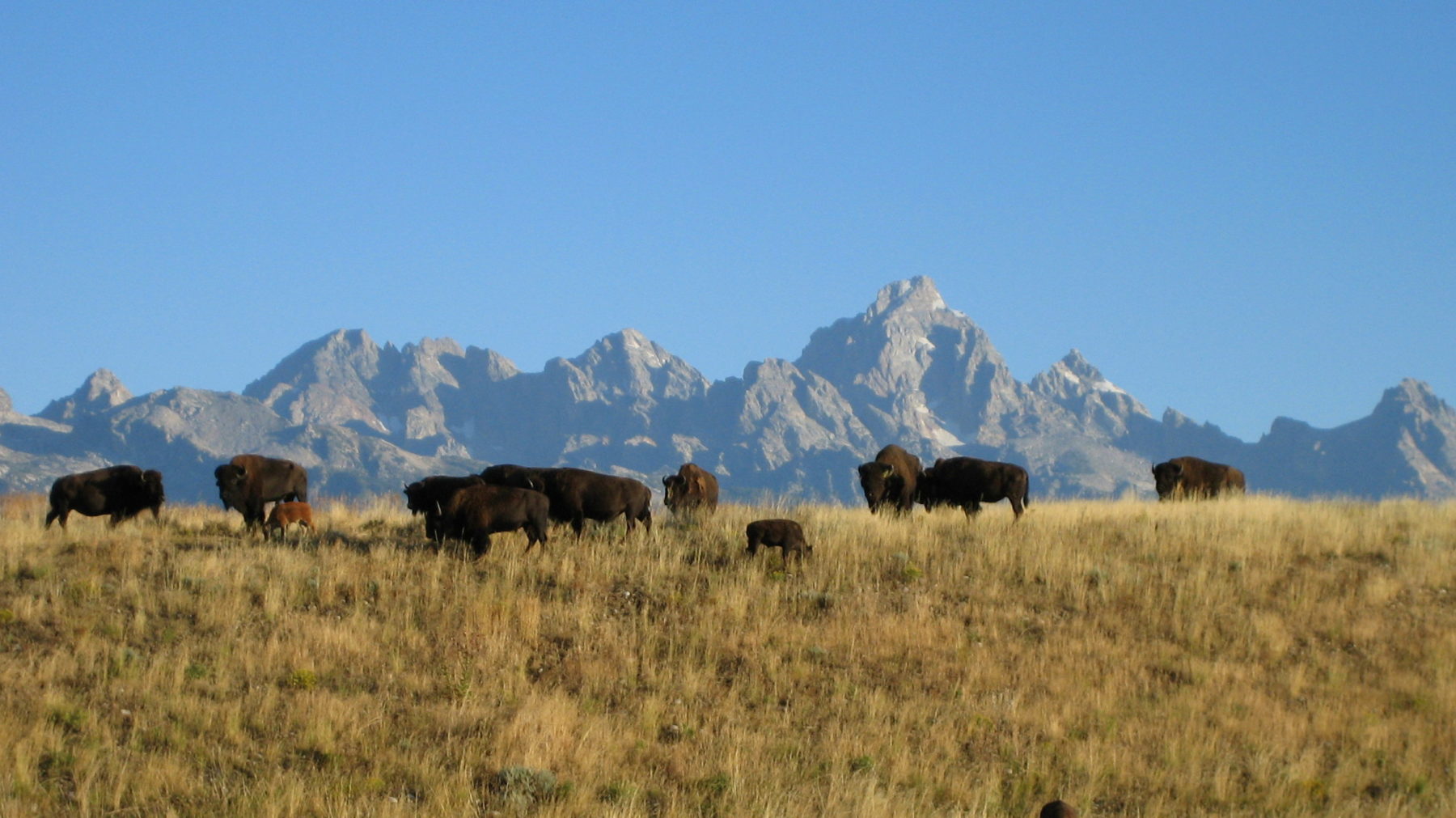
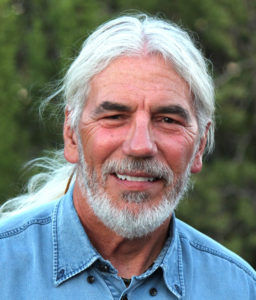
Dan Flores is a writer, historian, and former professor whose work explores the connections between people and the natural world in the American West. His most recent books—Coyote America and American Serengeti—are two of the most enlightening and informative books on the West’s natural history that I have ever read. The former is a biography of the coyote, a surprisingly fascinating animal with a rich and severely misunderstood history. The latter explores the last big mammals of the great plains—pronghorn, coyotes, horses, grizzlies, bison, and wolves—and also gives a great overview of North American big history.
It’s clear that Dan was a wonderful professor, because as you’ll hear in this episode, he has a real knack for explaining complicated subjects in a way that’s understandable, engaging, and exciting. This conversation gave me a glimpse into what it must have been like to be a student in Dan’s class at the University of Montana—I walked away from it full of new knowledge, and it whet my appetite to dig deeper into the many subjects we covered.
I could’ve asked Dan questions for hours and hours, but in our relatively short time together we managed to cover a lot. We start by discussing the coyote—how and why the animal has been so misunderstood, its similarities to humans, how it has managed to thrive despite efforts to totally eradicate the species, and the varying pronunciations of the word coyote. Then we discuss horses—the misconception that they are a non-native species in North America, their evolutionary history around the world, and some modern-day challenges facing the West’s few remaining wild horses. We also talk about Dan’s childhood in Louisiana, his current home in New Mexico, his favorite books on the American West, and much, much more.
This is an excellent episode and I’m excited for you to listen. If you haven’t already, buy Coyote America and American Serengeti—I can promise you’ll love them both.
Click Here to Download on iTunes
—
Click Here to Download on Google Play
—
Click Here to Download on Stitcher
—
Episode Notes
Topics Discussed
4:10 – History of the pronunciation of “coyote”
7:30 – Coyote’s historical reputation
11:00 – Coyote’s status in Native American lore
12:30 – Mark Twain’s influence on the coyotes’ image
14:05 – Coyotes as humans’ avatars
16:15 – Fission and fusion in coyotes
18:00 – Coyotes’ ability to control their reproduction
22:20 – Dan’s thoughts on the current attempted Federal Land grab
28:45 – Misconception that horses are non-native
34:30 – Current issues with horses in the United States
37:55 – Dan’s thoughts on the BLM Wild Mustang Program
40:15 – Dan’s early years in Louisiana
43:00 – First trip to Carlsbad Caverns
45:20 – Dan’s passionate love of desert
48:55 – Living in Montana’s Bitterroot Valley
51:00 – Changes in Montana during Dan’s time there
55:00 – “In Defense of the Ranchette” article
1:01:45 – Favorite books about the American West
1:08:00 – Most powerful experience outdoors
1:09:20 – Favorite place in the West
1:11:30 – Dan’s request of the listeners
1:15:45 – Connect with Dan
Information Referenced
- Dan Flores
- Coyote America: A Natural and Supernatural History by Dan Flores
- American Serengeti: The Last Big Animals of the Great Plains by Dan Flores
- Roughing It by Mark Twain
- Ben Masters’podcast
- Big History
- Henry David Thoreau
- Wallace Stegner
- Aldo Leopold
- In Montana – The View from the Ranchette
- American Prairie Reserve
- Beyond the 100th Meridian: John Wesley Powell and the Second Opening of the West by Wallace Stegner
- Dust Bowl: The Southern Plains in the 1930s by Donald Worster
- American Wolf: A True Story of Survival and Obsession in the West by Nate Blakeslee
- Dan’s Amazon Author Page
Noel Durant – Conservation & Community in the Gunnison Valley
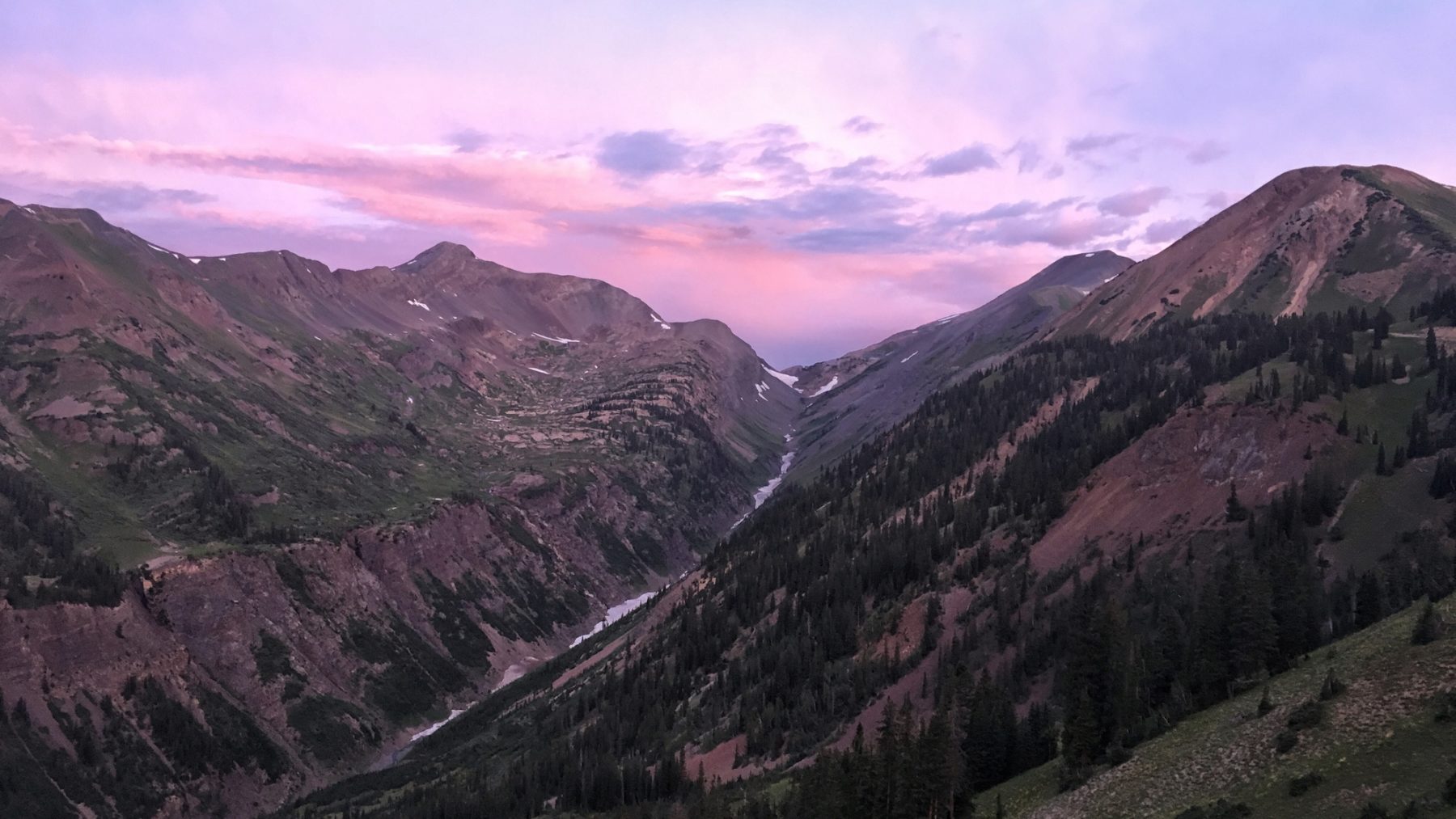
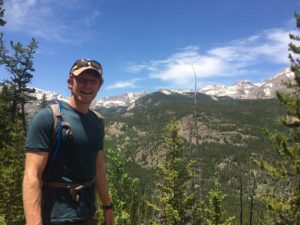
Noel Durant is the new Executive Director of the Crested Butte Land Trust, a conservation organization that protects and stewards the ranches, trails, open space, and wildlife habit of Colorado’s Gunnison Valley. Noel took the helm of the land trust in early 2017, and he brings a wide variety of conservation experience with him into this new role. He’s worked as a member of the Interagency Hotshot Crew, fighting fires across the American West. He has also worked for regional and national conservation organizations, doing everything from managing large swaths of rural land to developing urban trail systems.
Noel’s resume speaks for itself, but what is even more impressive is his intense curiosity and deep knowledge around all things conservation. Whether discussing the history of the Gunnison Valley or the ideas of Wendell Berry, it’s clear that Noel has a true passion for his work and a vision for the future of conservation in Colorado and beyond. His practical experience combined with abundant enthusiasm is what will allow him to continue and expand the work of Crested Butte Land Trust into the future.
As listeners of the podcast know, Crested Butte in one of my favorite places in the American West. Its ranching heritage, world-class recreation, and genuine community make it a unique and rare place in today’s American West. In our conversation, Noel explains what makes Crested Butte and the Gunnison Valley so special, and how the Land Trust must balance the goals of such a wide range of various stakeholders. He talks about the history of conservation in the Valley and where he sees conservation going in the future. We also discuss his time fighting fires throughout the West, how his early life and parents shaped his love of the outdoors, and lessons learned from his various roles in conservation.
This is an excellent episode with lots of interesting information, so be sure the check the episode notes for links to everything we discuss. I’m sure you’ll agree that Crested Butte Land Trust is in great hands under the leadership of Noel. Enjoy!
Click Here to Download on iTunes
—
Click Here to Download on Google Play
—
Click Here to Download on Stitcher
—
Episode Notes
Topics Discussed
2:55 – Crested Butte and the Crested Butte Land Trust
5:00 – Crested Butte compared to other mountain towns
7:00 – History of conservation in Crested Butte
11:00 – Variety of stakeholders and methods of conservation
16:30 – Overlap between ranchers and recreational users
19:00 – The community of the Gunnison Valley
20:15 – Early years in Tennessee
22:00 – Semester in western NC
23:50 – College at Clemson
27:00 – Time with the Interagency Hotshot Crew
29:00 – Details of a hotshot crew
33:00 – Community and purpose of the fighting fires
35:00 – Tragedies and challenges from the fire fighting world
39:45 – Moving on from fires to land conservation
43:00 – Time at Trust for Public Land
45:20 – Importance of open space in urban area
47:00 – Lessons learned from jobs in conservation
51:45 – Future of land conservation locally and nationally
56:45 – Favorite books
58:50 – Favorite documentaries
59:20 – Favorite location in the West
1:01:34 – Favorite hike in Crested Butte
1:03:00 – Best piece of advice he’s ever received
1:04:45 – Request of the listeners
1:05:45 – Connect with Noel and Crested Butte Land Trust
Information Referenced
- Noel Durant
- Crested Butte Land Trust
- CBLT on Instagram and Facebook
- Crested Butte, Colorado
- Outdoor Academy of the Southern Appalachians
- Clemson University
- Connor Coleman podcast
- Interagency Hotshot Crew
- Tribe by Sebastian Junger
- Fire by Sebastian Junger
- Lulu Lake Land Trust
- Trust for Public Land
- Wendell Berry
- Aldo Leopold
- Shop Class as Soulcraft by Matthew Crawford
- Winter: Notes from Montana by Rick Bass
- Alone in the Wilderness
Teal Blake – On Being Authentic & Original
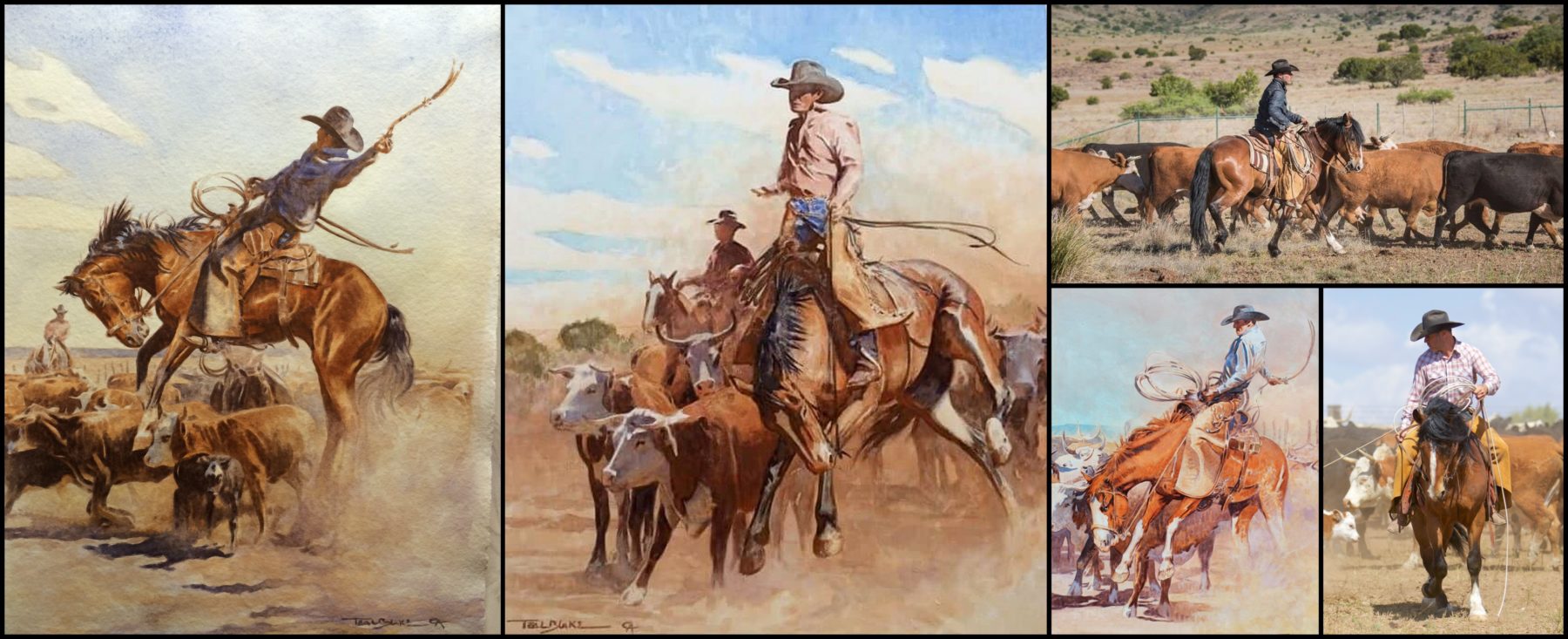
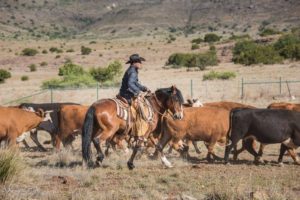
If you love art and the American West, chances are you’re already a fan of Teal Blake. His paintings of bucking horses, working cowboys, and the Western ranching lifestyle are some of the most authentic and creative around. Teal’s art is authentically Western because he’s so authentically Western—he has worked on ranches for all of his life, has ridden rodeo on the professional level, and has been making art since before he can remember. These unique life experiences, combined with a deep-seated drive to create original and striking art, meld together to make him one of the most genuine and fresh faces in Western art today.
Teal grew up in Augusta, Montana, the son of two creative parents who allowed him to roam free—fishing, hunting, and exploring the wilderness out his backdoor. During high school, he discovered his talent for bull riding and rodeo, and he pursued that passion for years, eventually competing on the professional circuit. Throughout all of his various adventures and life stages, Teal was continuously sketching and painting, and after several impressive showings at western art shows, he decided to make a go of it as a professional artist. Since then he hasn’t looked back, and his stature in the Western art world continues to grow.
We had an in-depth conversation in which we discussed Teal’s upbringing in Montana and Idaho, and how his artistic parents influenced his life and work. We chatted about his experience at art school, which ended with him flunking out, yet being the only one from his class to actually make it as a professional artist. We discuss his background in ranching and rodeo, and his process of transitioning into life as a professional artist. We also talk about the important role that external validation can play in a solitary creative endeavor such as painting. As usual, we discuss favorite books, favorite films, and his favorite place in the American West. We cover a lot in this episode, so be sure to check out the episode notes for all the topics and links to everything we discuss.
Images courtesy of Teal Blake
Click Here to Download on iTunes
—
Click Here to Download on Google Play
—
Click Here to Download on Stitcher
—
—
Episode Notes
Topics Discussed
3:33 – Process of becoming a professional artist
5:00 – Teal’s childhood in Montana
7:55 – Teal’s parents and their influence on him
9:35 – Early artistic influences
11:20 – Early artistic endeavors
12:00 – Move to Idaho and rodeo beginnings
14:55 – Decision to stop riding bulls
17:40 – Teal’s experience at college art school
21:30 – Transition from rodeo to full-time artist
24:00 – Teal’s first art show
28:00 – Teal’s daily routine and artistic phases
31:05 – Ranch work and its influence on Teal’s work
35:25 – Teal’s attraction to bucking animals — painting and riding them
38:20 – Biggest changes in Teal’s art over the past 10 years
40:33 – Challenge of creating new and original work
43:00 – Thoughts on the business of professional art
48:20 – Favorite books
52:10 – Importance of being humbled
53:10 – Raising kids in the internet age
56:50 – Favorite films
58:40 – Surprising hobbies
1:01:00 – Great advice Teal has received
1:02:15 – Favorite place in the West
1:05:50 – Teal’s advice to the listeners
1:07:45 – Connect with Teal online
1:08:10 – Chappin’!!
Information Referenced
- Teal Blake
- Teal’s Instagram
- Buckeye Blake
- Augusta, Montana
- C.M. Russell Museum
- Charlie Russell
- Will James
- Haley, Idaho
- Team roping
- Cutting horses
- War of Art by Steven Pressfield
- Cormac McCarthy
- The Border Trilogy by Cormac McCarthy
- Blood Meridian by Cormac McCarthy
- Thomas McGuane books
- Maynard Dixon documentary
- Unbranded
- Ben Masters Podcast
- The Infamous Chappin’ Video
Justin Simoni – The Ultra-Endurance Artist
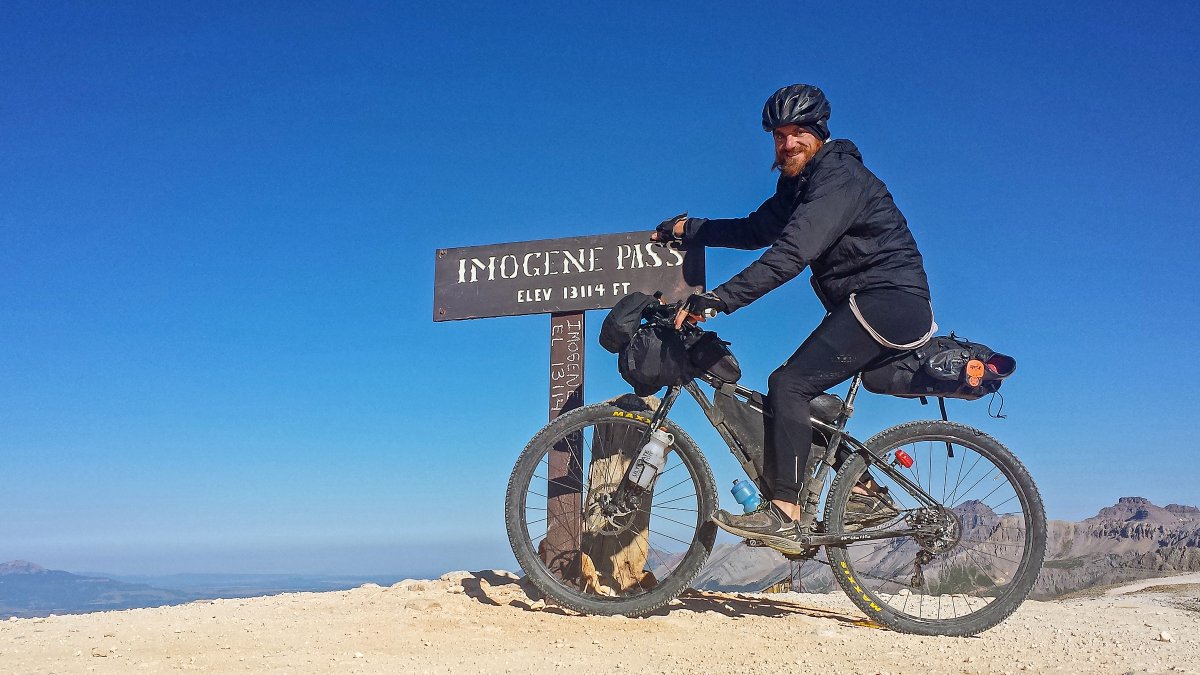
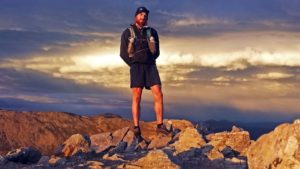
Justin Simoni is an ultra-endurance adventurer who is most well known for his self-powered, long-distance tours that combine cycling, mountain running, and climbing. He is currently preparing for the “Highest Hundred” in which he’ll climb Colorado’s 100 highest peaks, accessing them all by bike, in 60 days or less. If he pulls it off (and I’m betting that he will), it will be the first time anyone has linked all of these peaks by bike in a completely self-supported style.
Most people would assume that Justin has been a hardcore cyclist for his entire life, but he actually started riding relatively late. He studied painting in college and worked full time as a professional artist for years, living in an art gallery in downtown Denver. Frustrated with his car that kept breaking down, Justin purchased a bike and began to ride it as his primary mode of transportation. As his rides became longer and longer, he enjoyed it more and more, and pretty soon he was completely committed to long-distance cycling. What followed was a barrage of impressive solo ultra-distance adventures: cycling the Pacific Coast, racing the Tour Divide mountain bike race twice, and completing the Tour 14er, which involved cycling to all 58 of Colorado’s 14,000-foot mountains and climbing them… in just 34 days.
Thanks to his athletic accomplishments, artistic perspective, hilarious sense of humor, and infectious enthusiasm, Justin is truly one of a kind. We had a fun and funny conversation that covered a wide range of topics from his adventures to his time as an artist. We chatted about some of the techniques that he uses to stay upbeat during periods of extreme fatigue or fear, and we discussed how he balances his free-wheeling artist’s mentality with the monk-like discipline required to pull off such serious adventures. As usual, we discuss favorite books, films, and Justin shares the best piece of advice he’s ever received.
I appreciate Justin taking the time to chat during such a hectic period of planning and training. Also, thanks to the sponsors who are helping to make the Highest Hundred possible: Ultimate Direction, Surly Bikes, Colorado Mountain Club, OR, Sierra Designs, and La Sportiva.
This was a really fun conversation, so I hope you enjoy!
Photos courtesy of Justin Simoni
Click Here to Download on iTunes
—
Click Here to Download on Google Play
—
Click Here to Download on Stitcher
—
—
Episode Notes
Topics Discussed
Information Referenced
- Justin Simoni
- Justin on Facebook, Instagram, and Twitter
- Highest Hundred
- Colorado Centennials
- Colorado 14ers
- Tour Divide
- Tour 14er
- Ride the Divide
- “Everesting” Green Mountain
- Green Mountain
- Bill Briggs (interview)
- Bill Wright (blog)
- Anton Krupicka
- Joe Grant
- M&P podcast with Joe Grant
- Edward Abbey
- Desert Solitaire by Edward Abbey
- Monkey Wrench Gang by Edward Abbey
- All the Wild that Remains by David Gessner
- The Holy Mountain
- John Cage
- Taiko Drumming
- The Marathon Monks of Mount Hiei
- Sri Chnmoy Self-Trancendence 3,100-Mile Race
- Longs Peak
- Ultimate Direction
- Surly Bikes
- Colorado Mountain Club
- OR
- Sierra Designs
- La Sportiva
Bryan Martin & Elizabeth Williams – Life Skills Through Wilderness Adventure

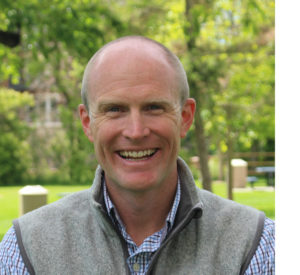
Bryan Martin and Elizabeth Williams work at Big City Mountaineers, a Colorado-based nonprofit that transforms the lives of underserved youth through wilderness mentoring expeditions. Through partnerships with community youth programs around the United States, Big City Mountaineers exposes close to 1,000 youth per year to outdoor adventures in some of our country’s most spectacular public lands. Not only do these young people learn outdoor skills, but more importantly, they learn critical life skills while also improving their self-confidence, communication skills, and leadership abilities.
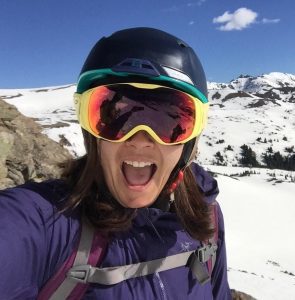
Prior to assuming his role as executive director at BCM, Bryan enjoyed great success with a wide variety of conservation and outdoor-related organizations including the Nature Conservancy, Continental Divide Trail Alliance, Colorado Mountain Club, and the Land Trust Alliance. Elizabeth was a teacher in India and Nepal before joining BCM as a marketing intern—10 years and a lot of hard work later, she has risen through the ranks and is now the Director of Programs. Bryan and Elizabeth share a deep enthusiasm for the outdoors and a belief that outdoor experiences can be transformative. Their passion for the work and BCM’s mission is palpable, so I know you’ll enjoy getting to know them.
I met Bryan and Elizabeth at the BCM offices in the American Mountaineering Center in Golden, Colorado, where we discussed BCM’s mission, the details of their wilderness expeditions, and why outdoor adventures can be such life-changing experiences. We chat about Bryan and Elizabeth’s professional backgrounds and learn what drew them to careers centered around the outdoors and service. They also tell a heart-warming success story in which a student overcomes her initial fears to thrive on a weeklong wilderness trip.
Thanks to Bryan and Elizabeth for taking the time to chat. Hope you enjoy!
Click Here to Download on iTunes
—
Click Here to Download on Google Play
—
Click Here to Download on Stitcher
—
—
Episode Notes
Topics Discussed
Information Referenced
- Big City Mountaineers
- BCM on Facebook, Twitter, and Instagram
- Bryan’s letter regarding the importance of public lands
- Summit for Someone
- National Outdoor Leadership School (NOLS)
- Outward Bound
- The Hippy Guide to Climbing the Corporate Ladder and Other Mountains by Skip Yowell
- Forever Changed by Linda Mornell
- Summer Search
- The Emerald Mile by Kevin Fedarko
- The Dog Stars by Peter Heller
- Chaco Presents: The Time Travelers
- Doug Topkins: Wild Legacy
John Dunaway – The Life and Times of a Merchant Mariner
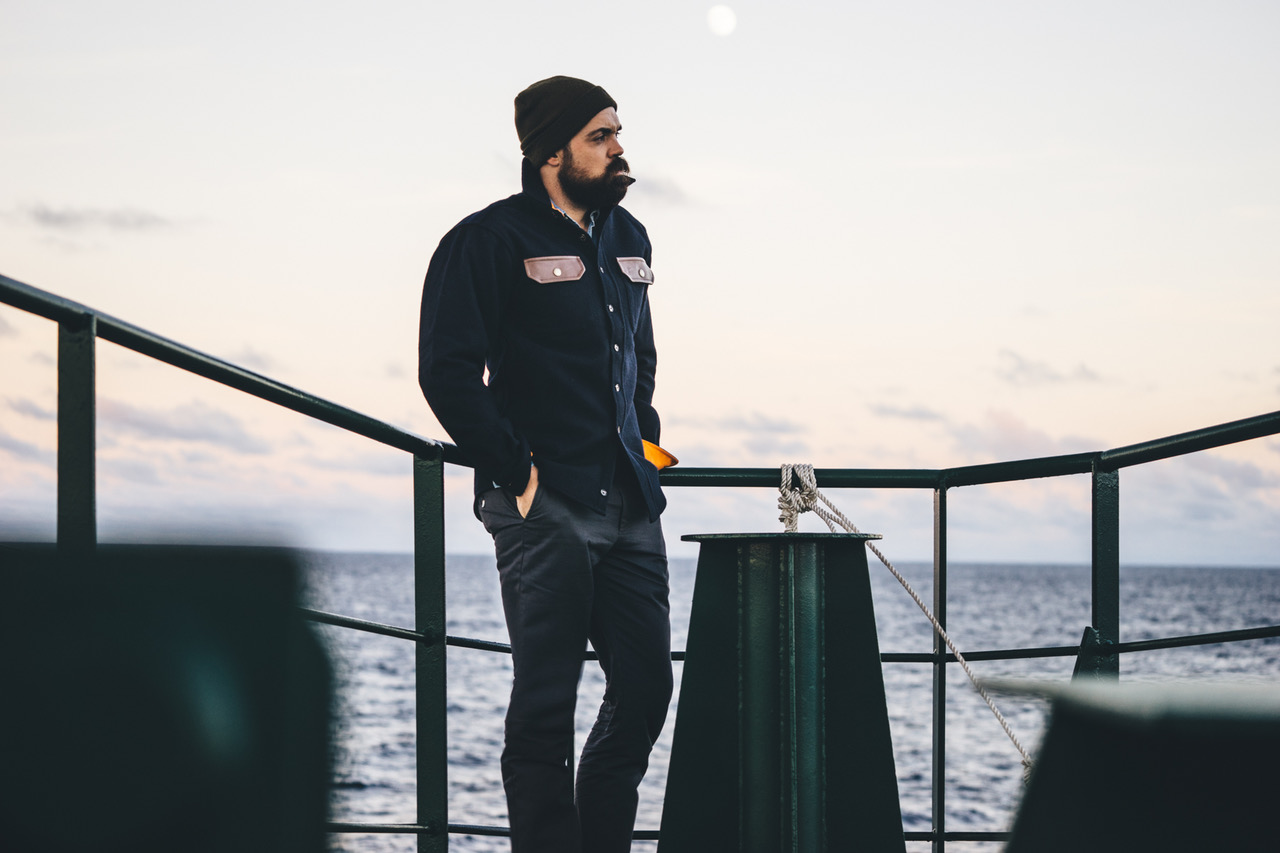
John Dunaway – Life and Times of a Merchant Mariner
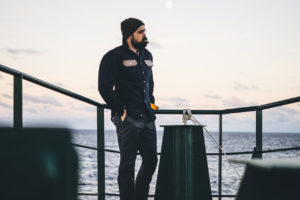
John Dunaway is a Texas-based merchant mariner who spends six months each year traveling the world as the captain of large cargo ships. Whether cruising the calm, warm waters of Central America or avoiding Somali pirates off the coast of Africa, John’s goal is the same: deliver the cargo efficiently while ensuring the safety of his crew—quite the responsibility for a 32-year-old. When not at sea, John is an avid bird hunter, surfer, and all-around adventurer who uses his downtime to explore everywhere from Jackson Hole to Canyonlands to Antelope Island with his wife and young daughter. Thanks to a talent for photography and writing, John has gained a huge following on Instagram, where he documents his exploits on his account, AbstractConformity.
So you might be asking, what does a ship captain have to do with mountains and/or prairies? Although John may spend most of his time on the high seas, far away from the American West, you’ll notice that his optimistic perspective, focused sense of purpose, and thirst for adventure parallel the attitudes and outlooks of many of my previous podcast guests. Also like other guests, he is well read, a deep thinker, and has a genuine conservation ethic thanks to his close connection to the natural world. Although the objects of our affections may be different, our underlying values and priorities are surprisingly similar.
After almost a year of recording this podcast, I was excited to switch it up a little with this in-depth conversation with John about a subject that was fairly new to me. We start by covering the basics of his job—how one becomes a ship captain, particulars on the size of the ships, and details of day-to-day life on a 90-day ocean voyage. Then we dig deeper into some of his thoughts on leadership, his rituals and superstitions, how fatherhood has changed his outlook, and how he manages the pressure that comes along with being responsible for a massive ship, his crew, and the cargo. He also tells a few crazy stories from Africa and India, and he shares some insights from his recent trips around the American West. As usual, we discuss favorite books, films, and thoughts on conservation.
I found this to be a fascinating conversation, and I’d love to hear what you think. If you have a moment, please shoot me an email and let me know your thoughts. As always, thanks for taking the time to listen; hope you enjoy.
Photos courtesy of John Dunaway
Click Here to Download on iTunes
—
Click Here to Download on Google Play
—
Click Here to Download on Stitcher
—
—
Episode Notes
Topics Discussed
Information Referenced
- John Dunaway
- John’s Instagram – AbstractConformity
- US Merchant Marine Academy
- The Power of Habit by Charles Duhigg
- The 4-Hour Work Week by Tim Ferriss
- Tim Ferriss podcast
- Endurance by Alfred Lansing
- Brady Robinson podcast interview
- Tyler Sharp podcast interview
- Knife Fights by John Nagl
- Texas Monthly article
- Filson article
- Jackson Hole
- Canyonlands
- Antelope Island
- The Drifters by James Michener
- 180 South
- Wes Anderson
Bernice Ende – Equestrian Explorer
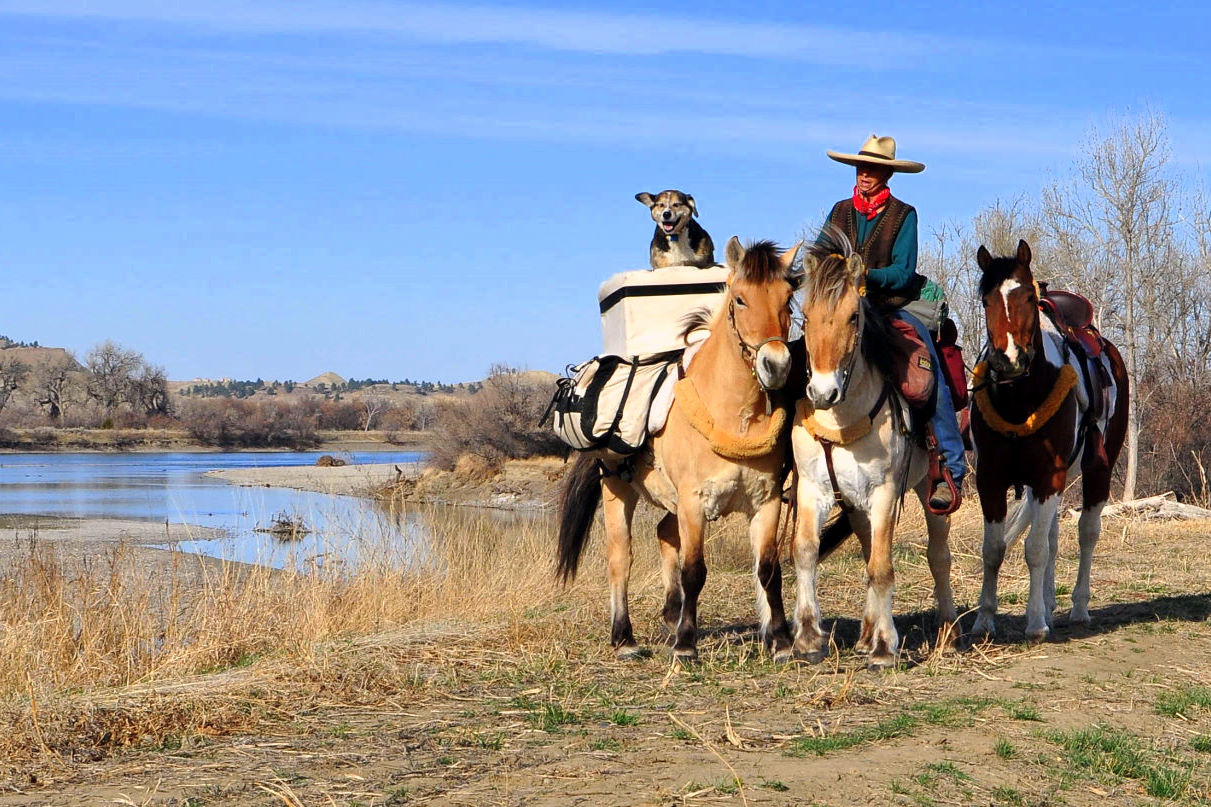
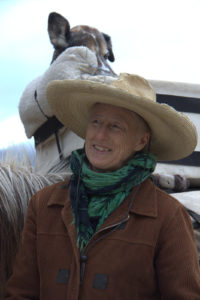
Bernice Ende is a horsewoman and adventurer who has ridden over 28,000 miles on horseback throughout the United States. Back in 2005, without any significant experience in long riding, Bernice set out by herself from her home in Trego, Montana and headed south—2,000 miles south, all the way to the Albuquerque, New Mexico. In the following years, her rides became more and more ambitious, and her most recent trip stretched 8,000 miles from Montana to the coast of Maine and back, a journey that took over two and a half years to complete!
I was surprised to learn that Bernice is relatively new to long riding and never had life-long dreams of making long riding a full-time vocation. She grew up on a Minnesota dairy farm and spent the majority of her adult life teaching ballet in cities such as San Francisco, Minneapolis, and Seattle. In 1992 she moved to Trego, Montana and opened a ballet school in a historic community hall building. After a decade of teaching there in Trego, she made the decision to take her first long ride. Since then, her story has been featured in numerous magazines, newspapers, and even on the Today Show. More importantly, her rides have inspired people of all ages to follow their dreams and pursue lives of adventure.
Bernice is extremely gifted at telling her her life story, so we had a fun and in-depth conversation. We discussed her background and the decisions that led her to strike out on her own on her first long ride. We talked about the mental challenges of pursuing such ambitious adventures and how she manages the emotional ups and downs of years on the road. She breaks down the specifics of her long rides—how far she rides each day, what she eats, where she sleeps, and all the other details. She also shares some heartwarming stories of people she has met on her rides—stories that will restore your faith in humanity in the midst of our current volatile political climate.
Thank you again to Bernice for taking the time to chat. I hope you enjoy!
Photos courtesy of Bernice Ende
Click Here to Download on iTunes
—
Click Here to Download on Google Play
—
Click Here to Download on Stitcher
—
—
Episode Notes
Topics Discussed
Information Referenced
- Bernice Ende
- Bernice’s Facebook Page and “Lady Long Rider” page
- The Long Rider’s Guild
- Sherlock Holmes
- Sir Arthur Conan Doyle
- Wallace Stegner
- Mary Oliver
- Sinclair Lewis
- All the Wild That Remains: Edward Abbey, Wallace Stegner, and the American West by David Gessner
- Edward Abbey
- Blackfoot Community Conservation Area
Mike Reilly – Helping Combat Veterans Rediscover Purpose

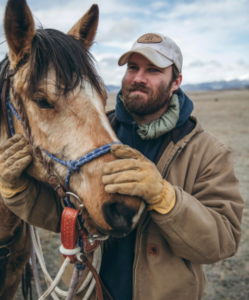
Mike Reilly is the Veterans Program Coordinator at Heroes and Horses, a Montana-based nonprofit that uses expedition-style horse pack trips through wild landscapes to help veterans overcome the challenges of life after the military. Prior to his work with Heroes and Horses, Mike was a Navy SEAL and served as a member of SEAL Team 1 in Operation Iraqi Freedom and Operation New Dawn. As he was transitioning out of the military, he heard about Heroes and Horses and signed on as a student. The program offered a perfect blend of service, teaching, helping others, and adventure that spoke to Mike’s strengths and interests; after completing the program, he was hired as a full-time member of the team.
Heroes and Horses is not a vacation. It’s a rigorous and hardcore three-phase process that takes veterans with no prior horseback experience and, in the course of a summer, turns them into expert horsemen and wilderness travelers. Through the hard work and focus required to make it through the program, veterans are able to forge lasting bonds and discover a renewed sense of purpose—which gives them the skills and confidence to thrive in the civilian life as they begin their post-military lives. Amazingly, this program is offered at no cost to veterans.
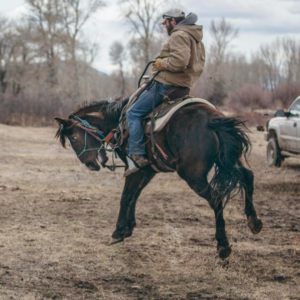
Mike was nice enough to take a break from a morning of training wild mustangs to chat with me about the program and his personal story. We discussed how he initially connected with Heroes and Horses and how it helped him through some of the challenges of post-deployment life. Mike explained the organization’s upcoming 500 Miles Project, in which they are training horses from the BLM’s Wild Mustang Program and planning to take them on a 500-mile ride later this summer. He also talks about his military career, and how a collegiate baseball injury was the catalyst that led him to pursue his dream of becoming a SEAL.
Mike is a humble guy with a deeply ingrained passion for serving and helping others, so I know you’ll enjoy this episode. I encourage you to check out the Heroes and Horses website, visit their GoFundMe page, and consider supporting their important work.
Photos courtesy of Chris Douglas
Click Here to Download on iTunes
—
Click Here to Download on Google Play
—
Click Here to Download on Stitcher
—
—
Episode Notes
Topics Discussed
Information Referenced
- Heroes and Horses
- Heroes and Horses team
- Micah Fink – Founder and Executive Director of H&H
- H&H on Facebook and Instagram
- The 500 Miles Project
- 500 Mile Project GoFundMe page
- YETI H&H Film
- 500 Miles Project teaser
- Navy SEALs
- BUDs
- Unbranded
- Ben Masters
- Podcast interview with Ben Masters
- Tom Dorrance
- Road House
- Cobra
- Big Trouble in Little China
AD Maddox – The Art of Trout and Fly Fishing

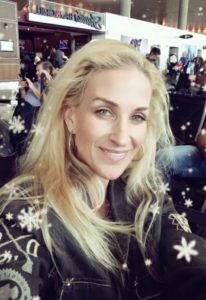
AD Maddox is an accomplished artist who creates some of the most spectacular and memorable paintings of trout that I’ve ever seen. Using bright colors and unique perspectives, AD depicts trout and the fly fishing lifestyle in a way that is completely original, yet so authentic you’d be hard-pressed to find an angler who doesn’t love her work. Her art has been featured widely throughout the fishing world, including on the cover of Gray’s Sporting Journal, Patagonia apparel, and even StealthCraft drift boats.
I first encountered AD’s work when I moved to Jackson Hole in the mid-2000s. I’m not an art connoisseur, but I was instantly taken away with how she managed to capture the beauty and realistic details of trout with a contemporary and unconventional style. And just like her work, AD is a one-of-a-kind original—she spent years as a super-competitive athlete, studied exercise physiology in college, taught herself to paint without any formal art education, and rips around backroads on a Ducati motorcycle. Despite a fun-loving and easygoing exterior, she approaches her work with discipline and rigor that seem more fitting for a professional soldier than a professional artist.
Thanks to AD’s outgoing and hilarious personality, we had a very fun and wide-ranging conversation. We chatted about her many years living in Jackson Hole and how the people, landscapes, and natural beauty of that valley influenced her art. We discussed her upbringing and her parents’ role in giving her the confidence to pursue art as a full-time career. She also talks in detail about the importance of facing challenges (both in work and life) head-on and proactively, with a positive attitude and relentless work ethic. Whether you’re an artist or not, there are many wise lessons in the conversation that anyone could apply to their work and life.
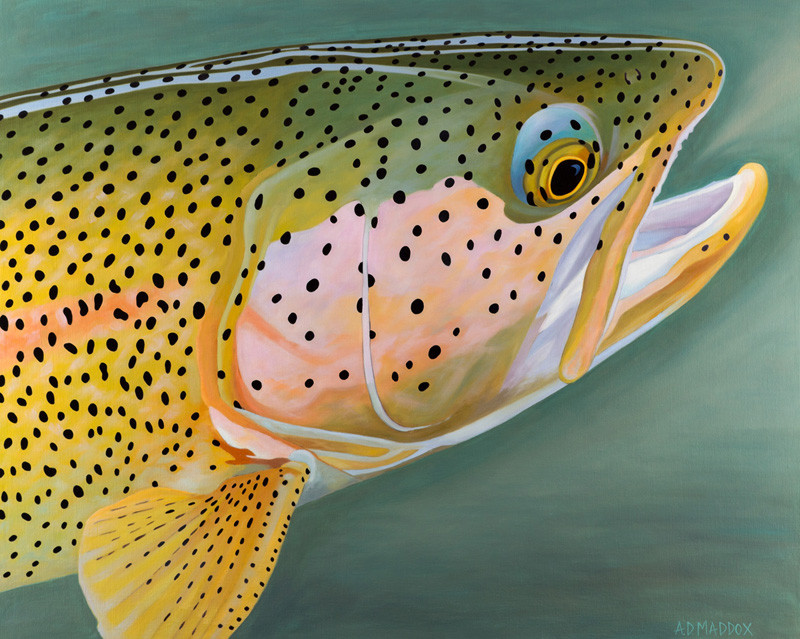
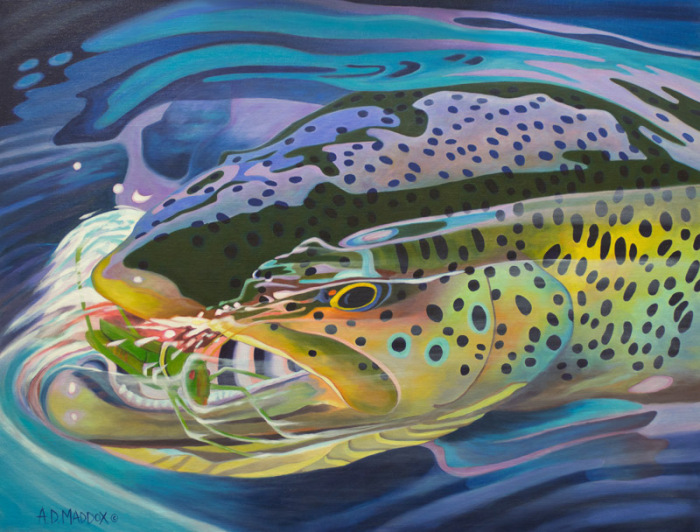
Photo and images courtesy of AD Maddox
Click Here to Download on iTunes
—
Click Here to Download on Google Play
—
Click Here to Download on Stitcher
—
—
Episode Notes
Topics Discussed
Information Referenced
Jeff Lee – Creating a Literary Home on the Range
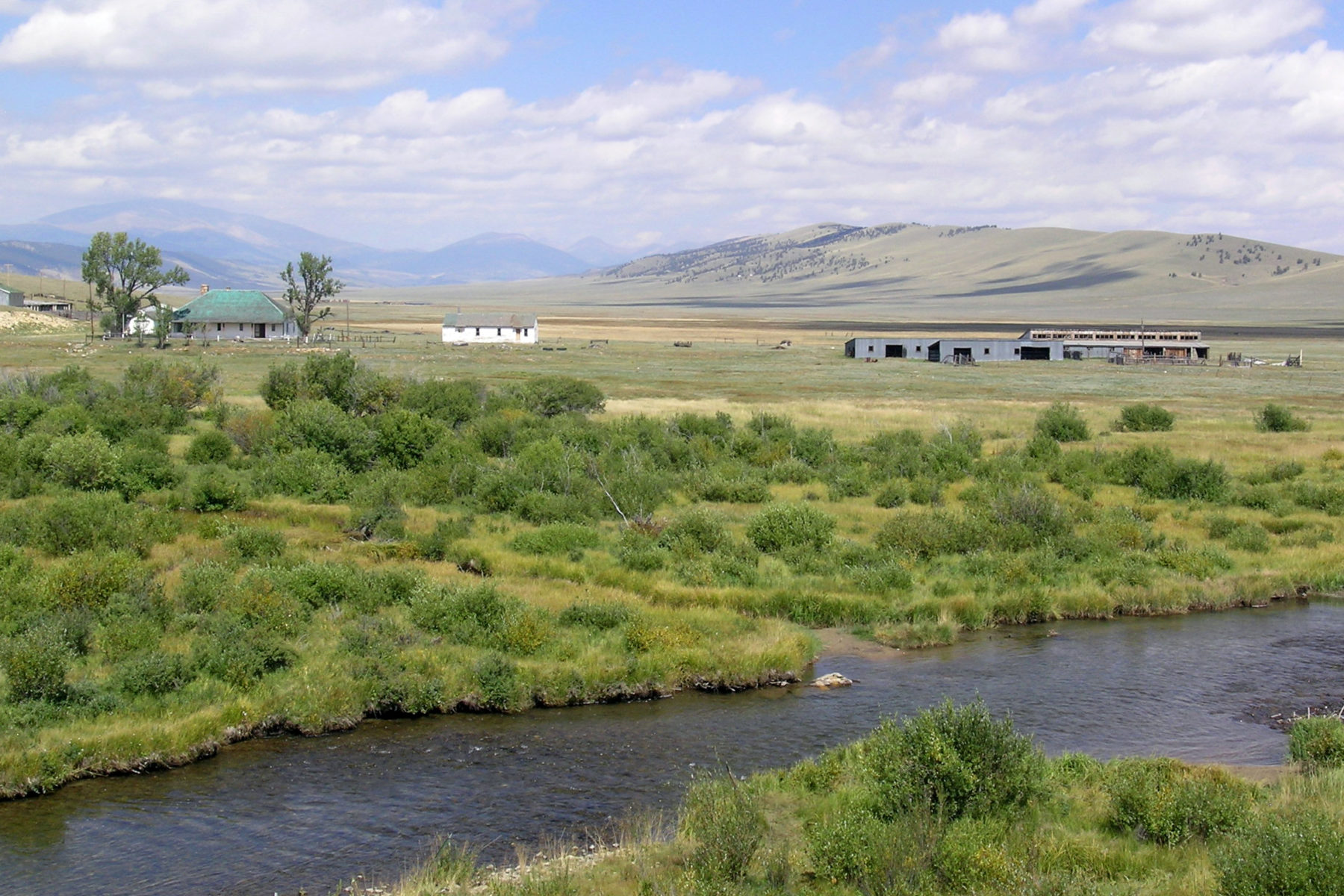
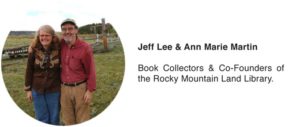 Jeff Lee is the co-founder of the Rocky Mountain Land Library, a residential library located on a historic ranch in one of Colorado’s most beautiful and dramatic high country grassland basins. The Buffalo Peaks Ranch, as it is known, will eventually house a collection of over 35,000 books related to natural history, conservation, and the American West. These books will be dispersed throughout ranch in houses and agricultural structures that have been preserved and restored by a growing team of enthusiastic volunteers. The ranch will become a place where individuals can immerse themselves in a natural setting, surrounded by books, for days at a time to read, write, and work on projects related to the West’s unique landscapes.
Jeff Lee is the co-founder of the Rocky Mountain Land Library, a residential library located on a historic ranch in one of Colorado’s most beautiful and dramatic high country grassland basins. The Buffalo Peaks Ranch, as it is known, will eventually house a collection of over 35,000 books related to natural history, conservation, and the American West. These books will be dispersed throughout ranch in houses and agricultural structures that have been preserved and restored by a growing team of enthusiastic volunteers. The ranch will become a place where individuals can immerse themselves in a natural setting, surrounded by books, for days at a time to read, write, and work on projects related to the West’s unique landscapes.
The idea for the Land Library came to Jeff and his wife Ann (the library’s other co-founder) when they visited a residential library in Europe during the mid-1990s. Given their deep love of books and land, Jeff and Ann immediately saw the potential for a similar concept in Colorado that centered around the history and landscapes of the American West. More than 20 years and tens of thousands of books later, their vision has become a reality—the Rocky Mountain Land Library is open for business and continuing to grow and evolve.
For anyone who has listened to this podcast, you know that the Land Library is my dream come true—it combines ranches, conservation, nature, and books—so I was obviously extremely excited to chat with Jeff. In a little over an hour, we covered a ton of interesting information, including the project’s backstory, the history of the ranch, and Jeff and Ann’s long term vision for the Land Library. Of course, we discuss books, and Jeff has many excellent recommendations that were brand new to me. It’s worth noting that the Land Library is in the midst of the a fundraising campaign, so I encourage you to visit their KickStarter page, watch the video, and donate to the cause… I just did, so you definitely should too! Links to everything are in the episode notes.
If you love the West, love books, and love the land, I can guarantee you will love the Land Library and this episode. Enjoy!
Photos courtesy of the Rocky Mountain Land Library
Click Here to Download on iTunes
—
Click Here to Download on Google Play
—
Click Here to Download on Stitcher
—
—
Episode Notes
Topics Discussed
Information Referenced
- Rocky Mountain Land Library
- Land Library on Facebook, Instagram, and Twitter
- Kickstarter Campaign
- Buffalo Peaks Ranch informational brochure
- Buffalo Peaks Ranch site plan
- Tattered Cover Book Store
- US Geological Survey
- Lake Powell
- William Gladstone
- South Park
- South Park City Museum
- HistoriCorps
- David Lavender
- Wallace Stegner
- Beyond the 100th Meridian by Wallace Stegner*
- Bernard DeVoto
- The Walk by William deBuys*
- Sweet Promised Land by Robert Laxalt*
- The Big Burn by Timothy Egan*
- Theodore Roosevelt
- Gifford Pinchot
- Boulder Bookstore
- Wendell Berry
- A Native Hill by Wendell Berry*
- The Wild Places by Robert MacFarlane*
- David Gessner
* Please buy these books at your local bookseller!!!
Christian Beckwith – Building a Conservation Coalition

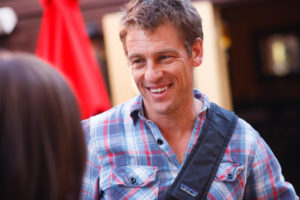
Christian Beckwith is the director of SHIFT, a Jackson Hole-based non-profit that is building a powerful coalition to protect our nation’s public lands. By bringing together climbers, skiers, hunters, anglers, land managers, and countless other stakeholders, SHIFT is finding common ground and harnessing these groups’ collective power to ensure that public lands—our birthright as Americans—remain safe during this tenuous time in political history.
After a distinguished career in the publishing world which included editing the American Alpine Journal and co-founding Alpinist Magazine, Christian experienced a profound change in priorities when one of his close friends was killed in an avalanche in the Teton backcountry. At that point, Christian decided to focus his resources and energy exclusively on work that makes a “substantive difference in the world.” From there he founded the Center for Jackson Hole, SHIFT, and, most recently, the Emerging Leaders Program which brings together a diverse group of early career leaders in conservation.
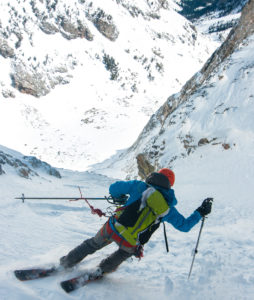
Christian’s career is inspiring in many ways, but I especially admire his willingness to set audacious goals, put himself on the line, and not wait around for permission to make things happen. We dig into all of these topics in our hour-long conversation, and he shares some interesting insights into his career and the future of conservation. We also discuss Christian’s early childhood experiences that led him to a career focused on adventure and the outdoors, and he talks about his relationship with Yvon Chiounard and how Chiounard has influenced him both personally and professionally. We chat about Christian’s favorite books, documentaries, and how fatherhood has focused his thinking on the importance of conservation. There’s a full list of the topics we discuss in the episode notes.
Given the current fights surrounding our public lands, this is a timely and powerful episode. I hope this conversation spurs you to continue educating yourself on threats to our public lands and to take appropriate action to protect them.
Photos courtesy of Christian Beckwith
Click Here to Download on iTunes
—
Click Here to Download on Google Play
—
Click Here to Download on Stitcher
—
—
Episode Notes
Topics Discussed
Information Referenced
- SHIFT
- The Emerging Leaders Program
- Alpinist Magazine
- The American Alpine Journal
- Apocalypse Couloir and Prospectors Mountain
- Aldo Leopold’s Land Ethic
- Yvon Chouinard
- Patagonia
- Doug and Kris Tompkins
- 180 South
- The Hobbit by J.R.R. Tolkien
- Sometimes a Great Notion by Ken Kesey
- On the Road by Jack Kerouac
- War and Peace by Leo Tolstoy
- The New Yorker
- Barbarian Days: A Surfing Life by William Finnegan
- Supermensch – The Legend of Shep Gordon
